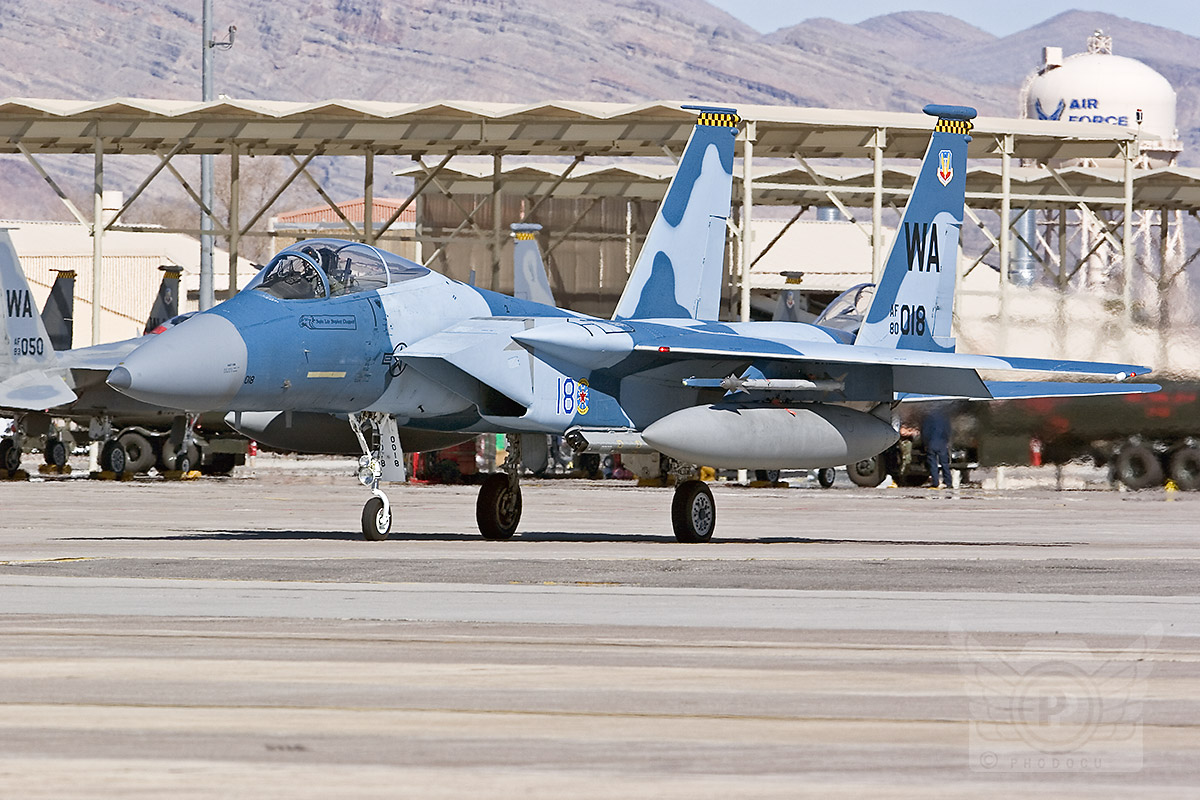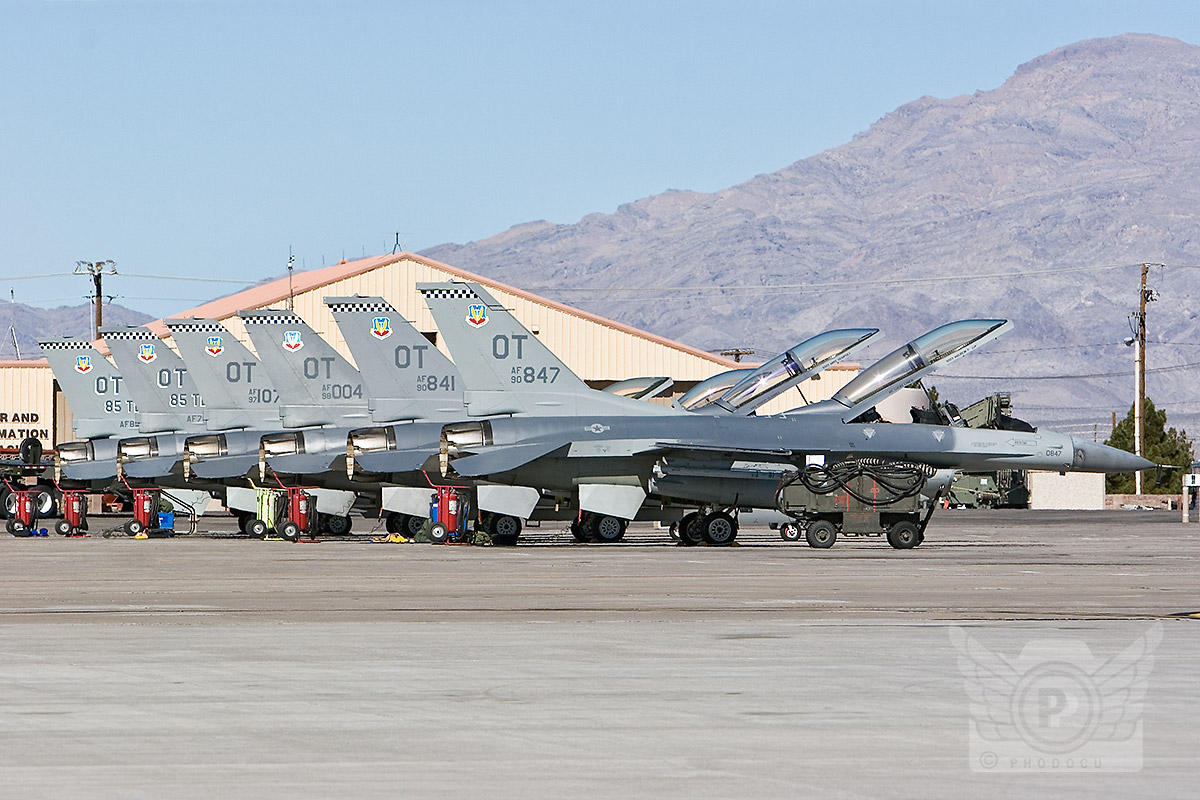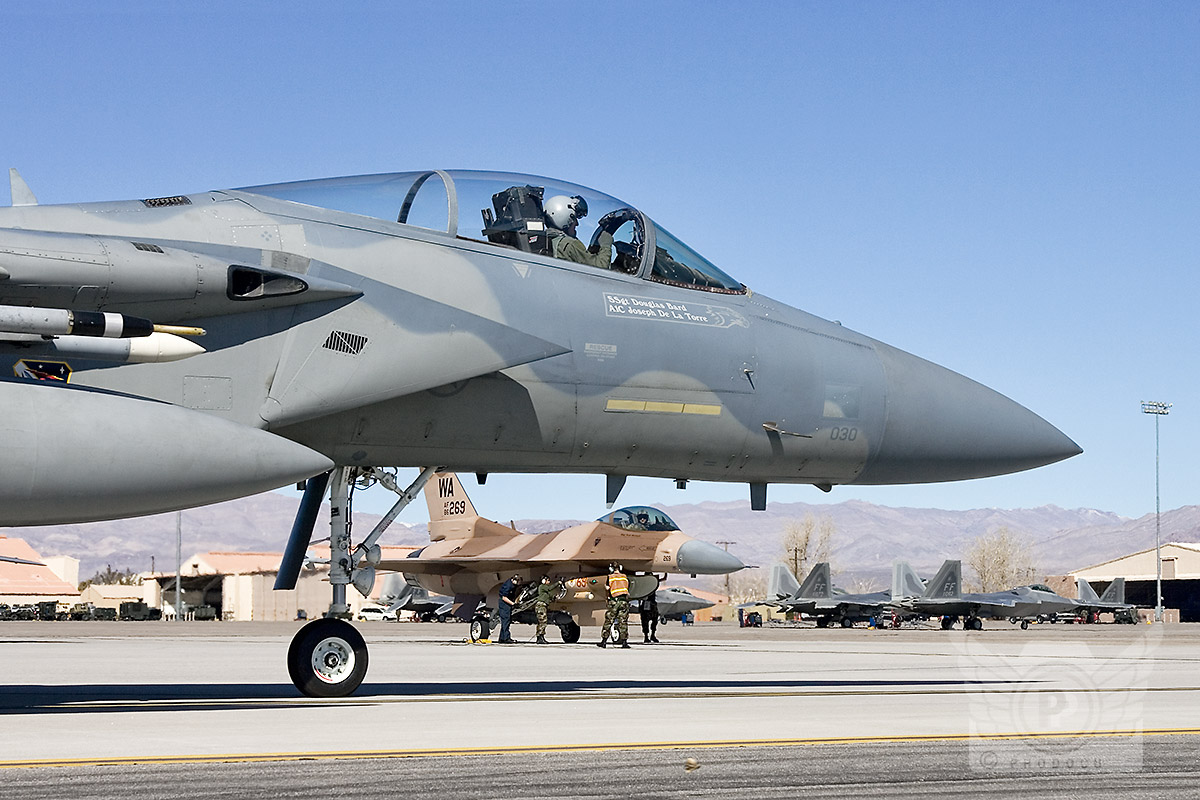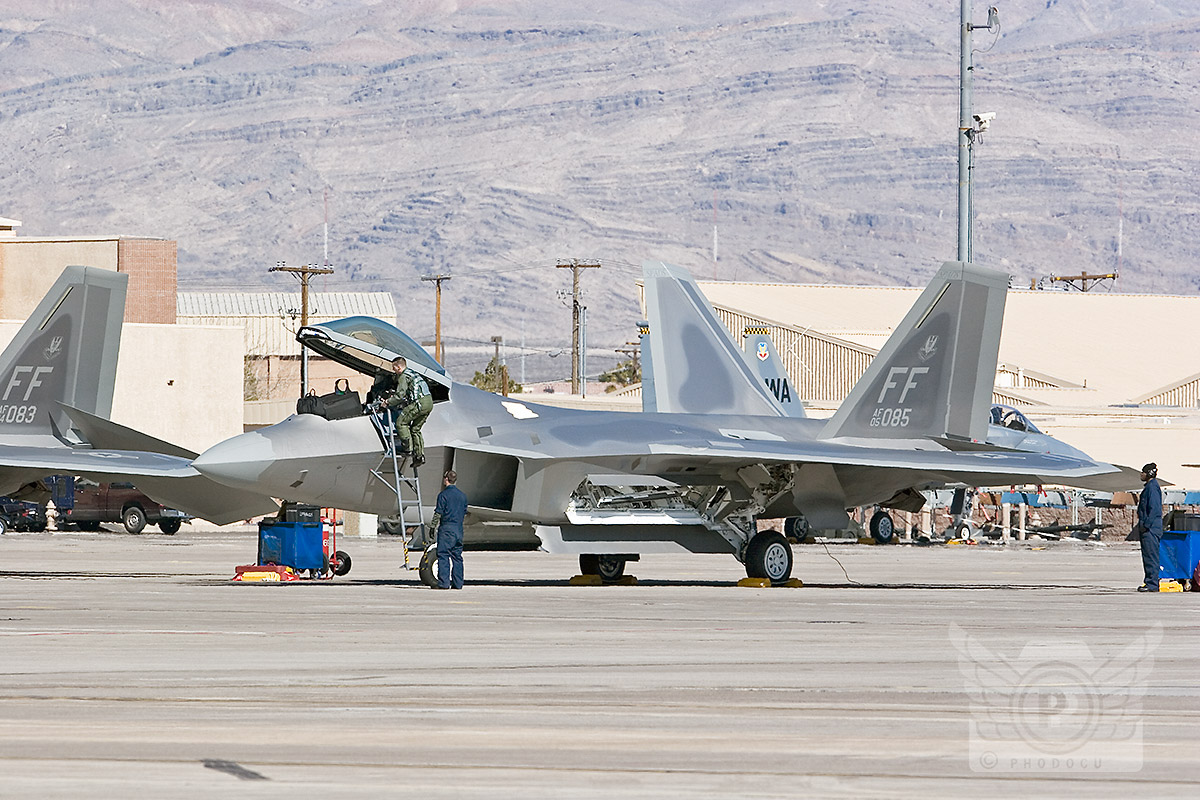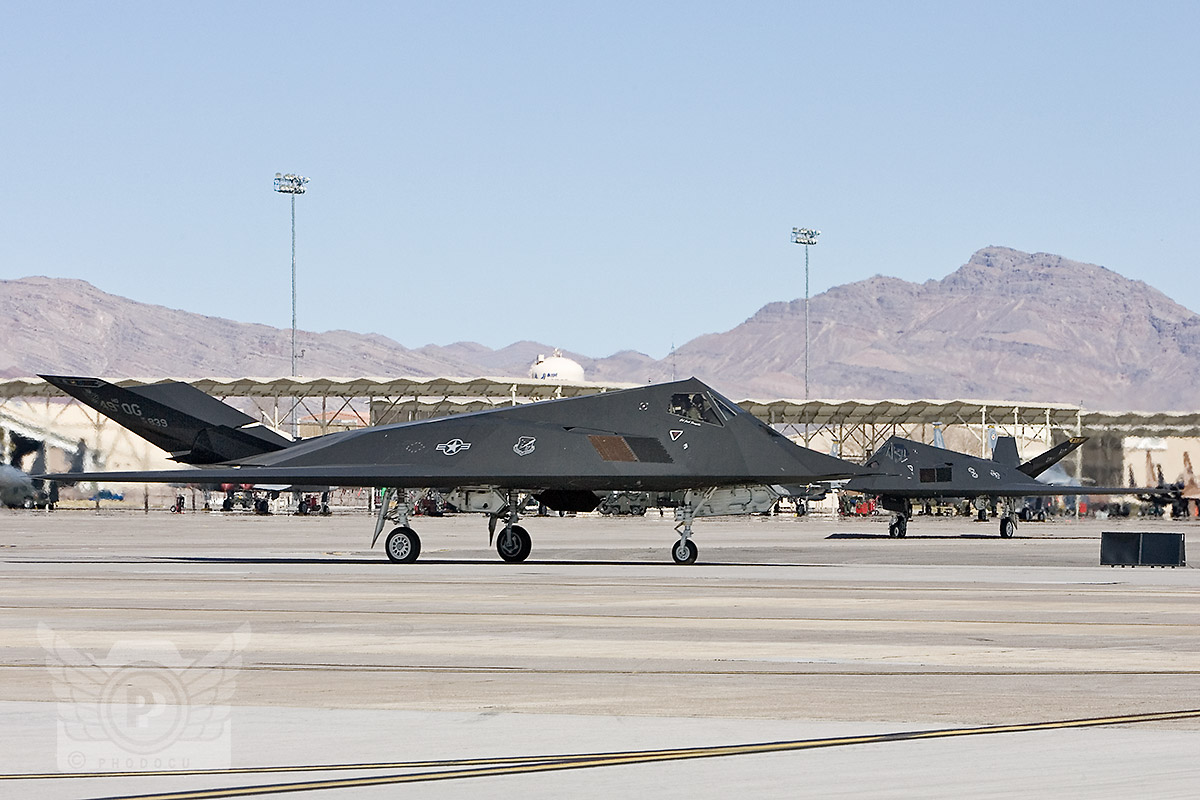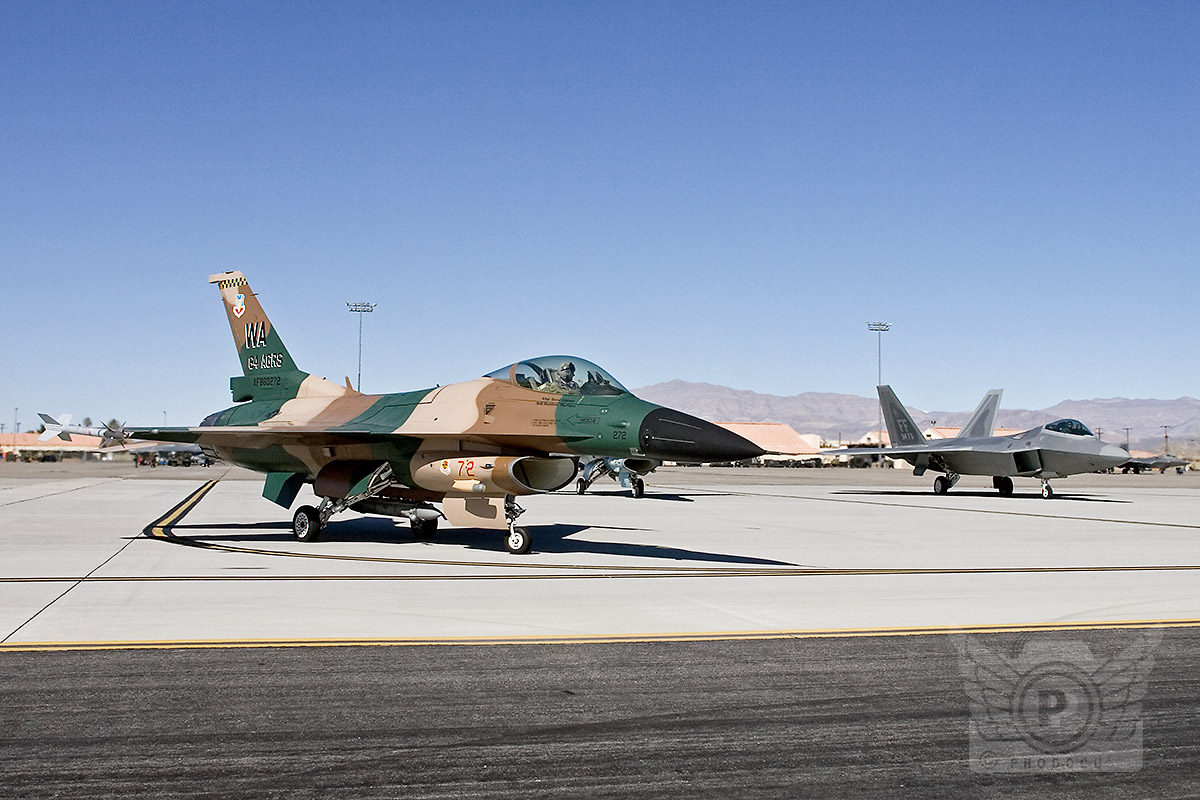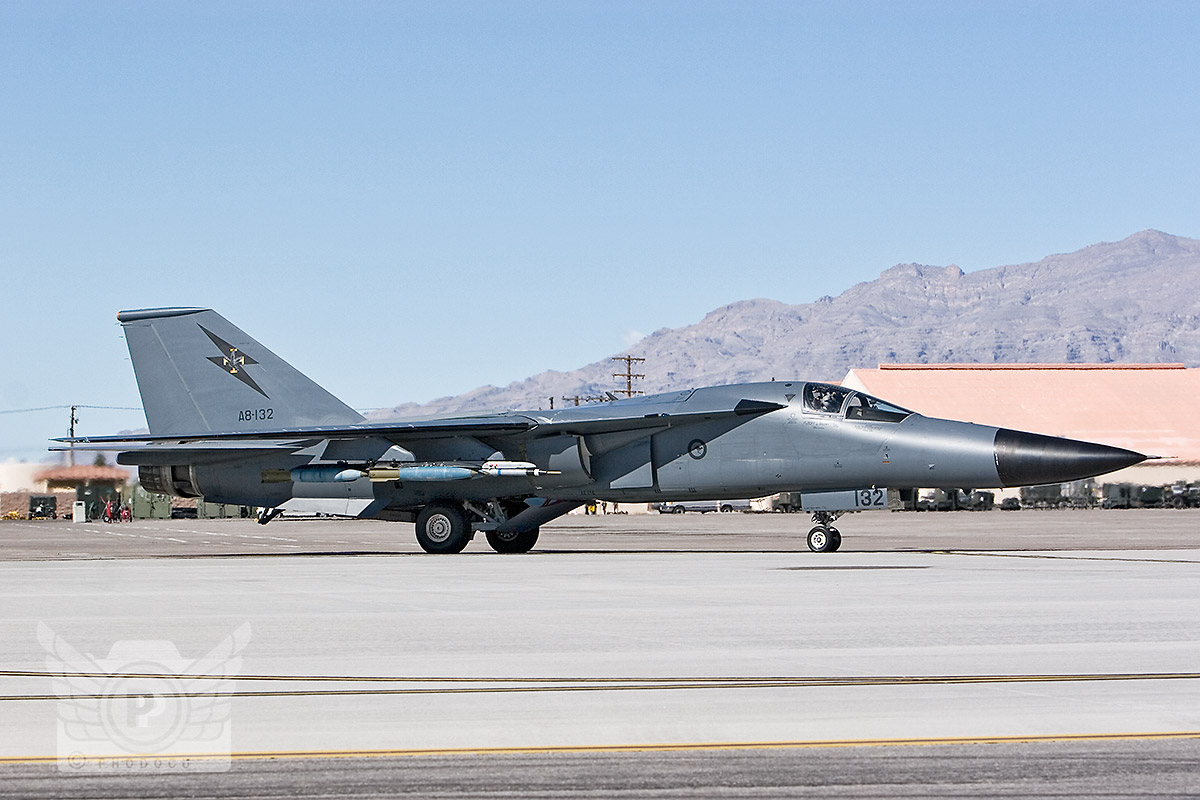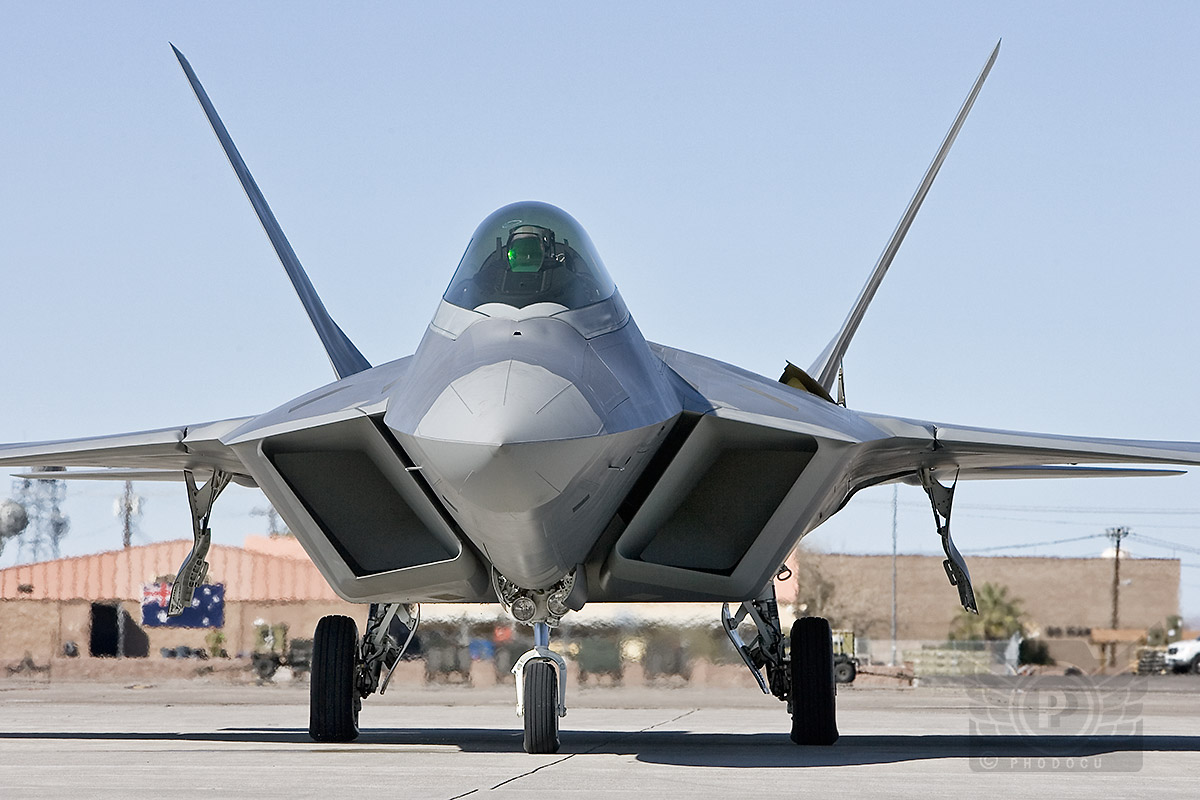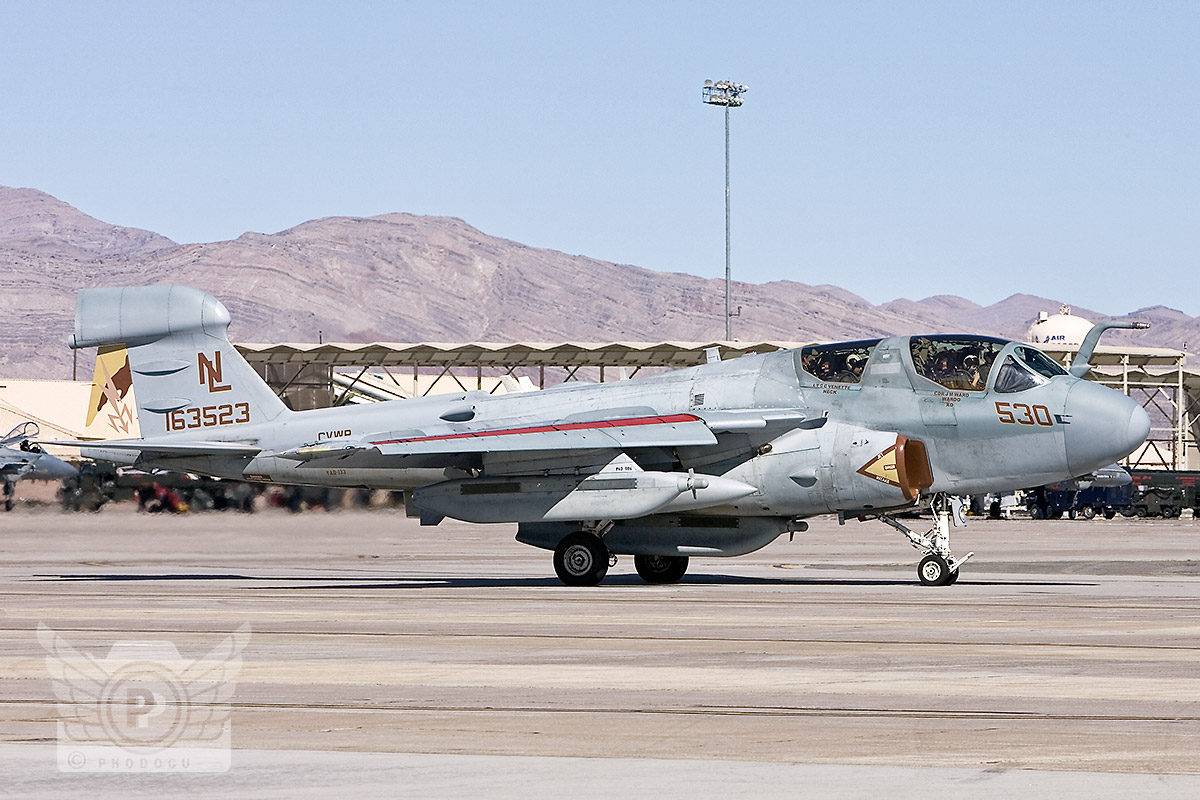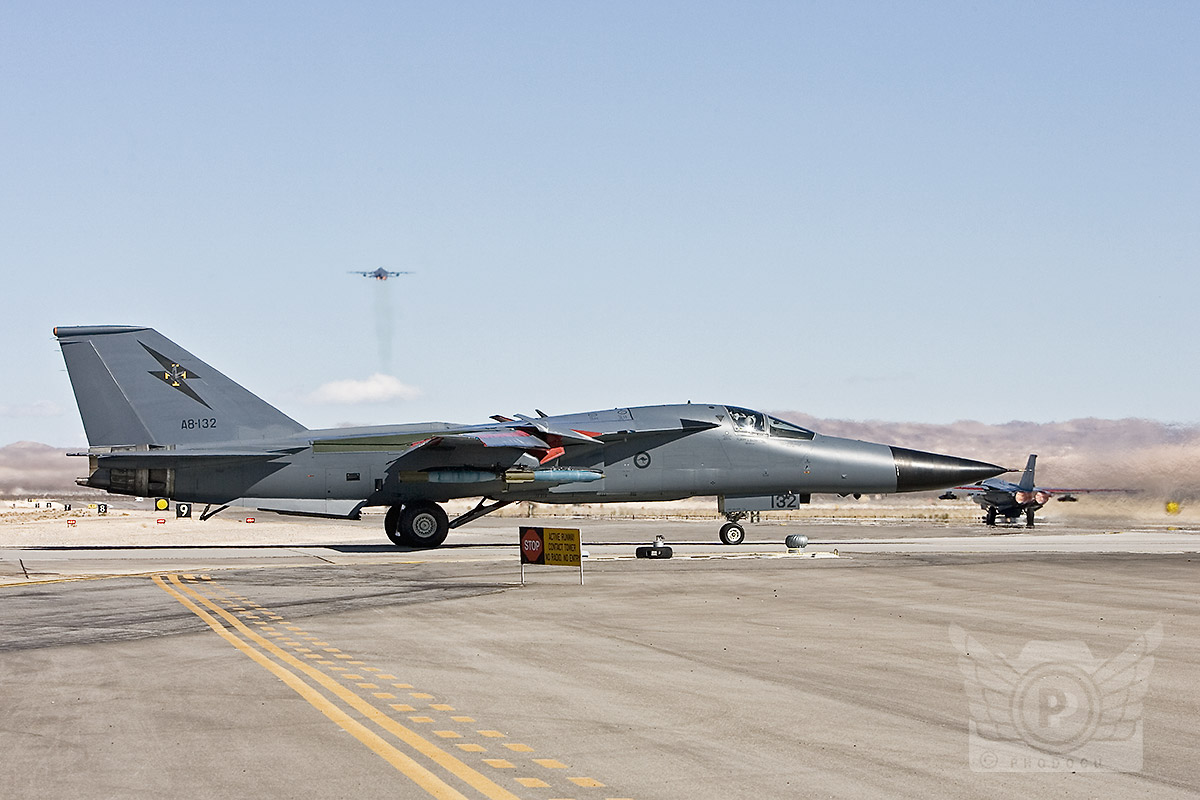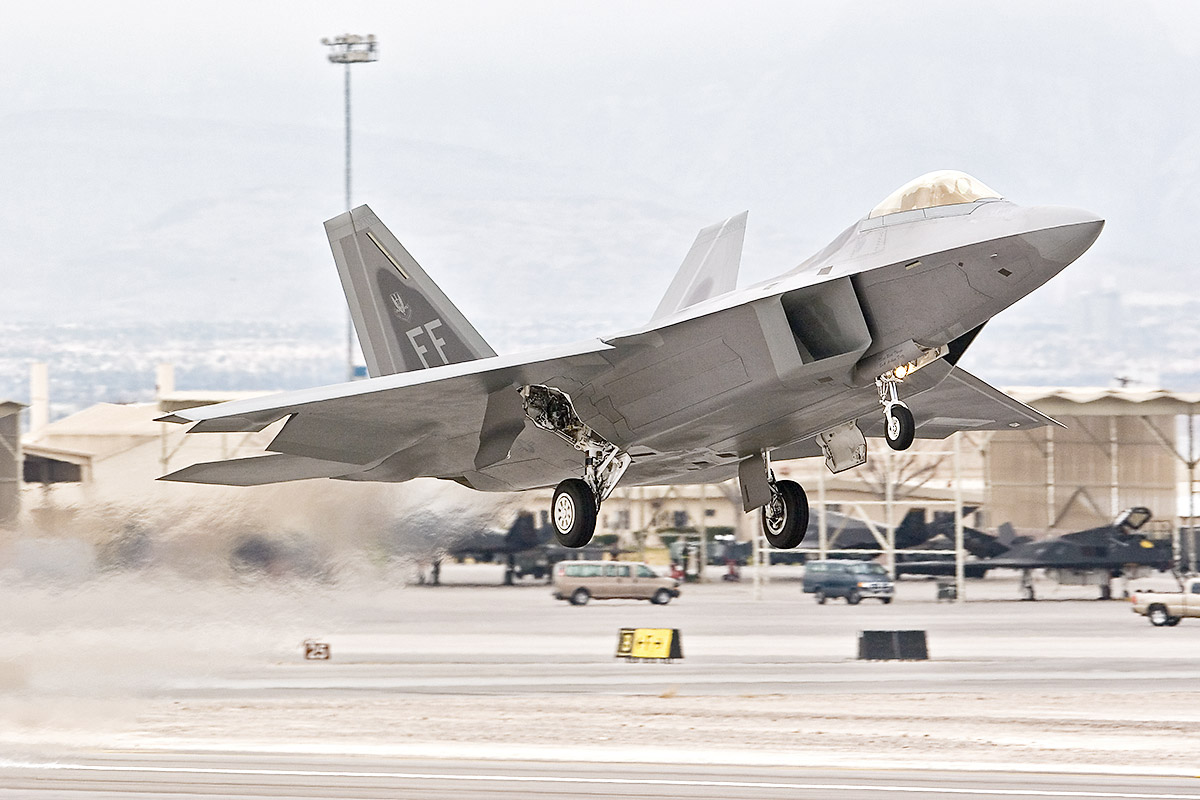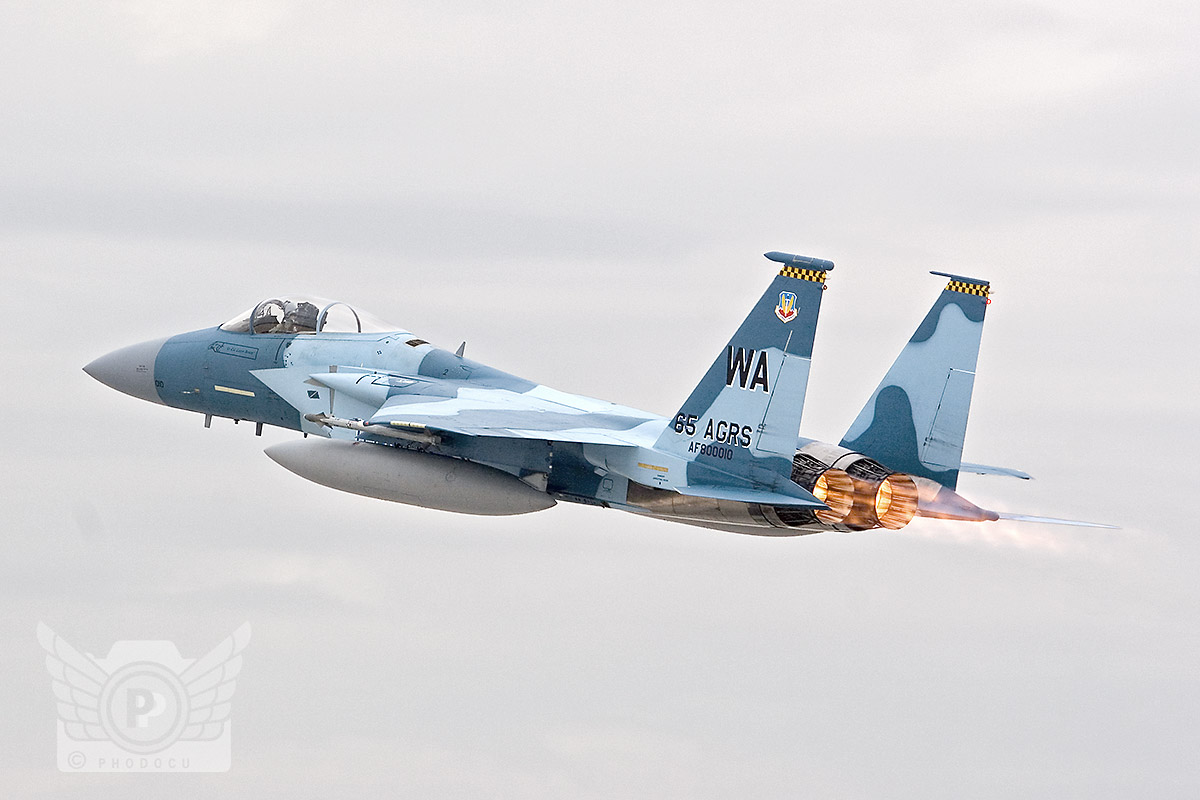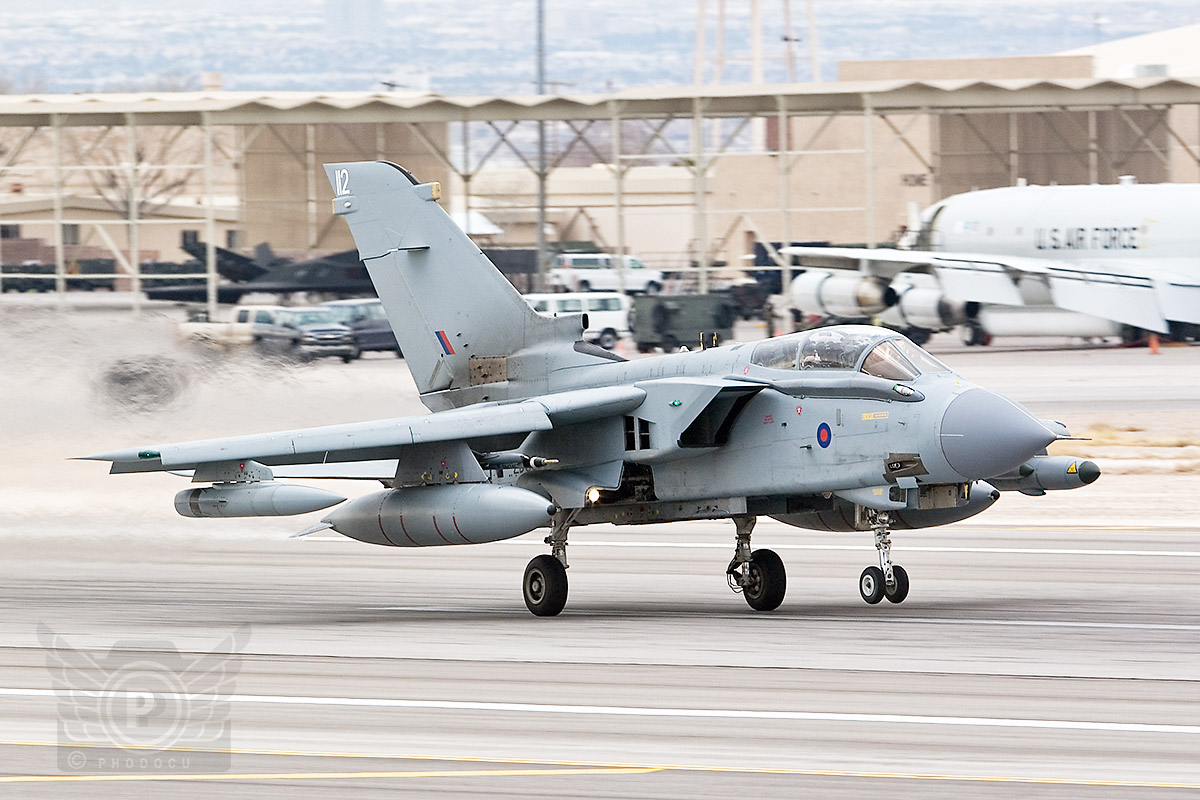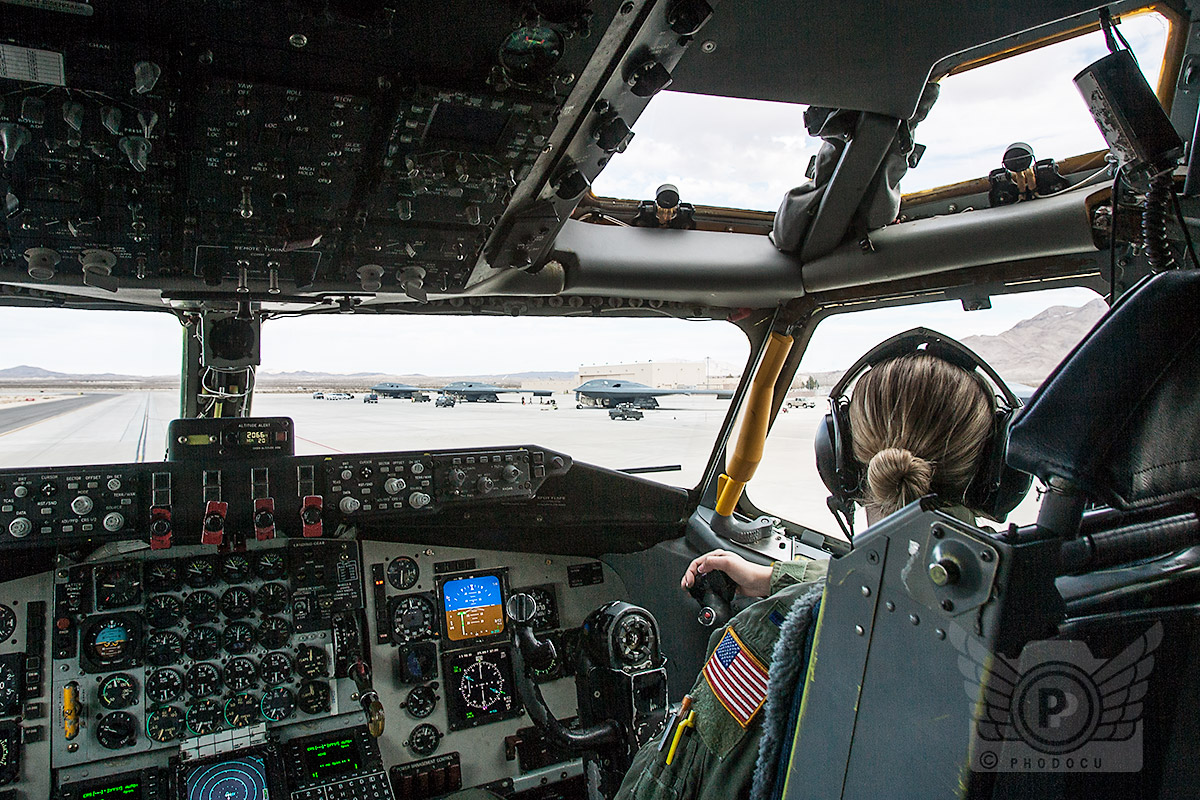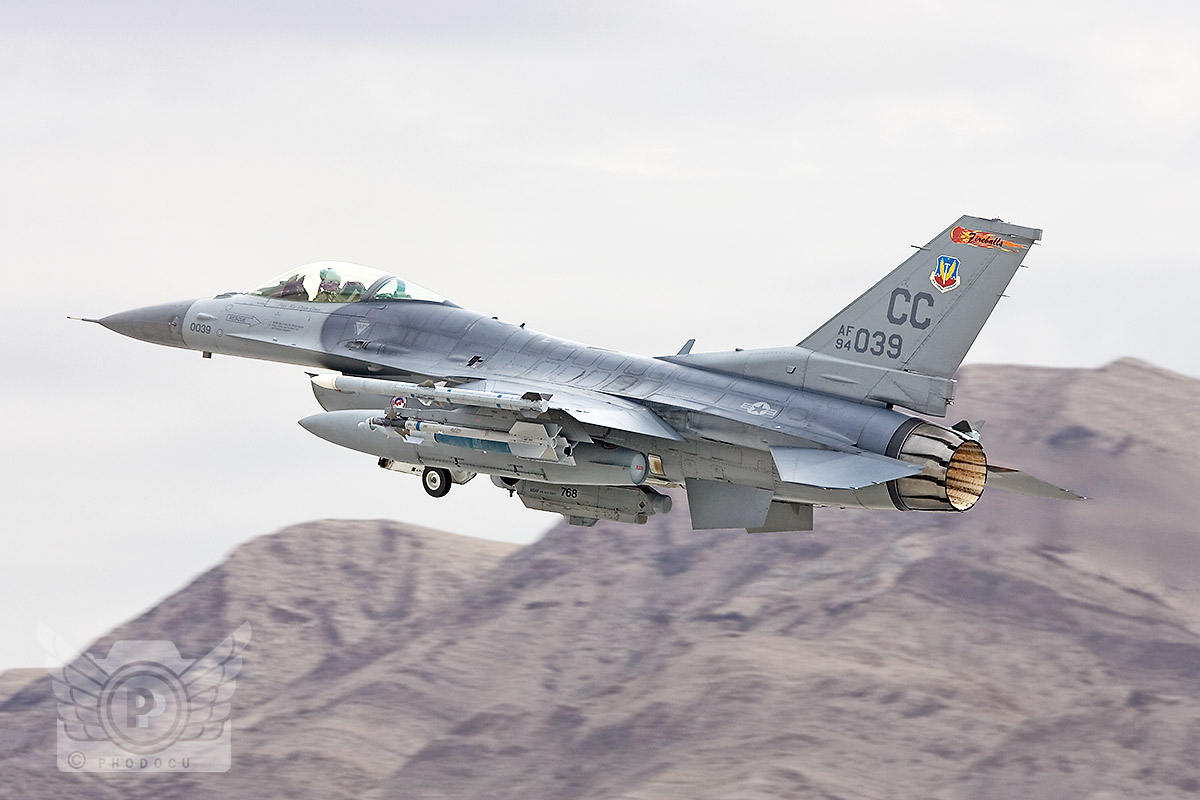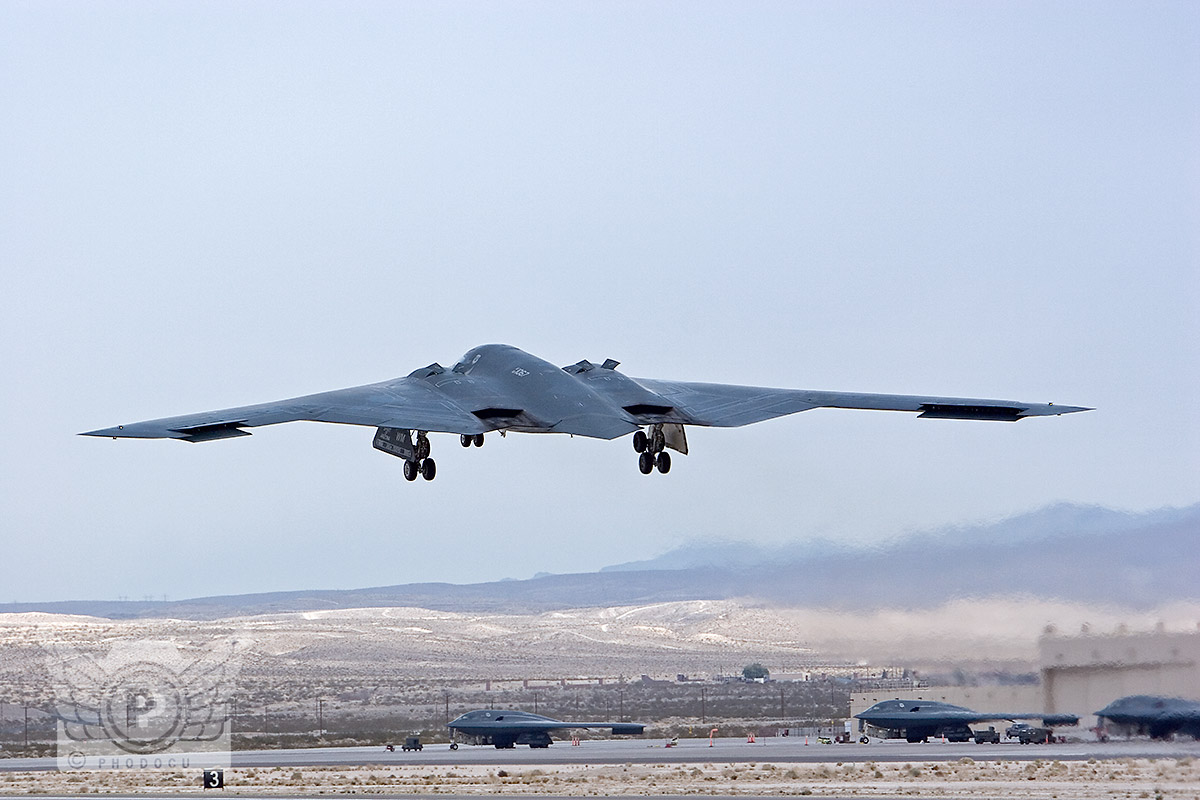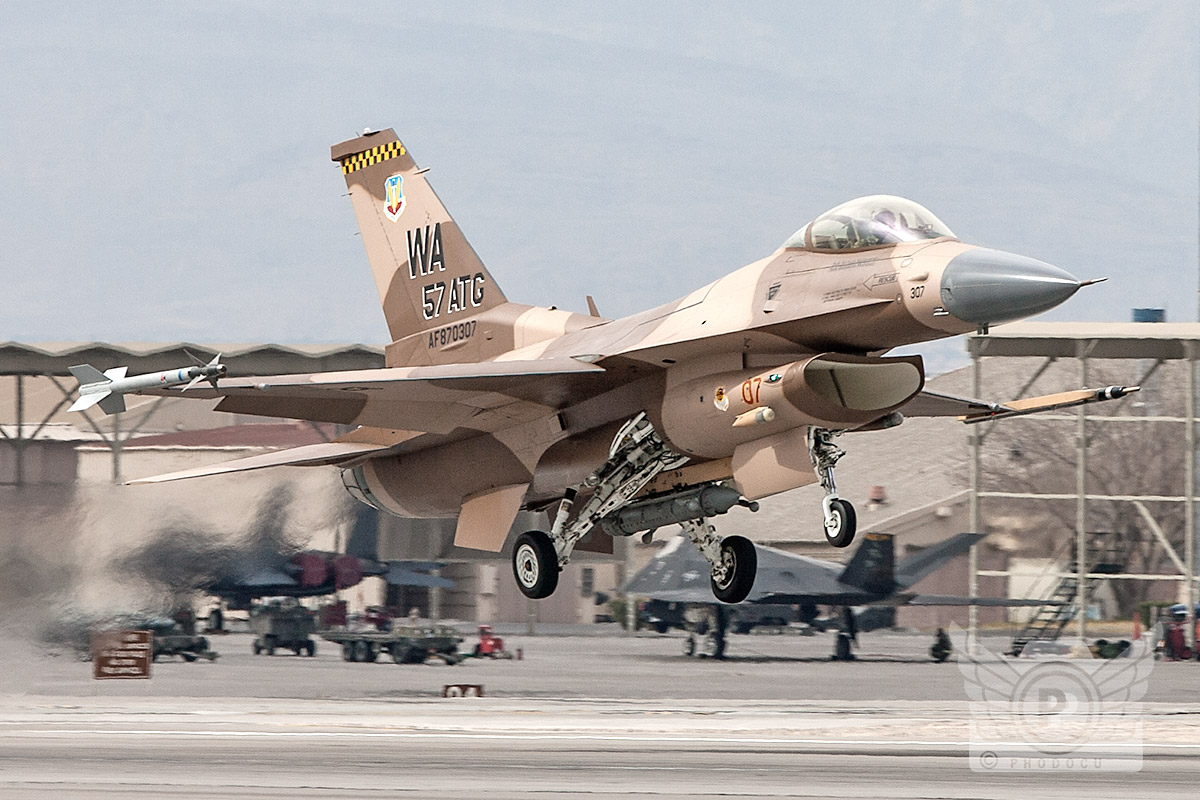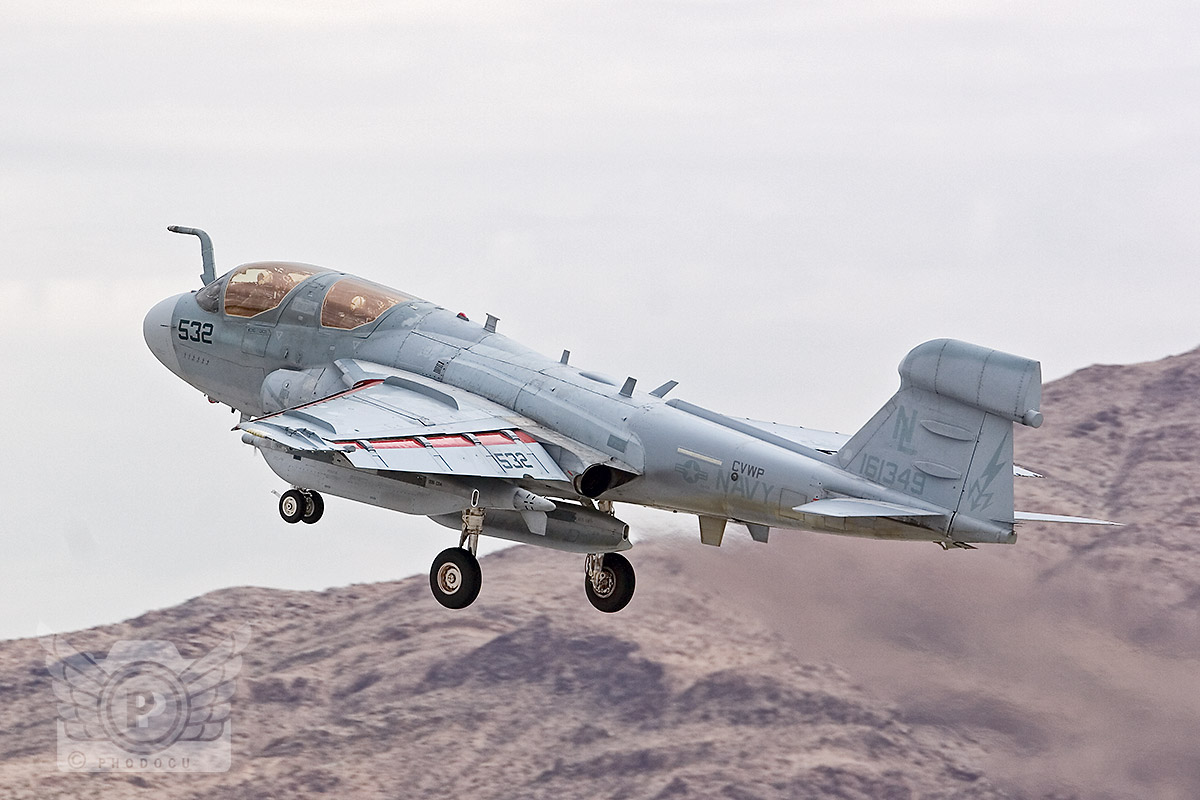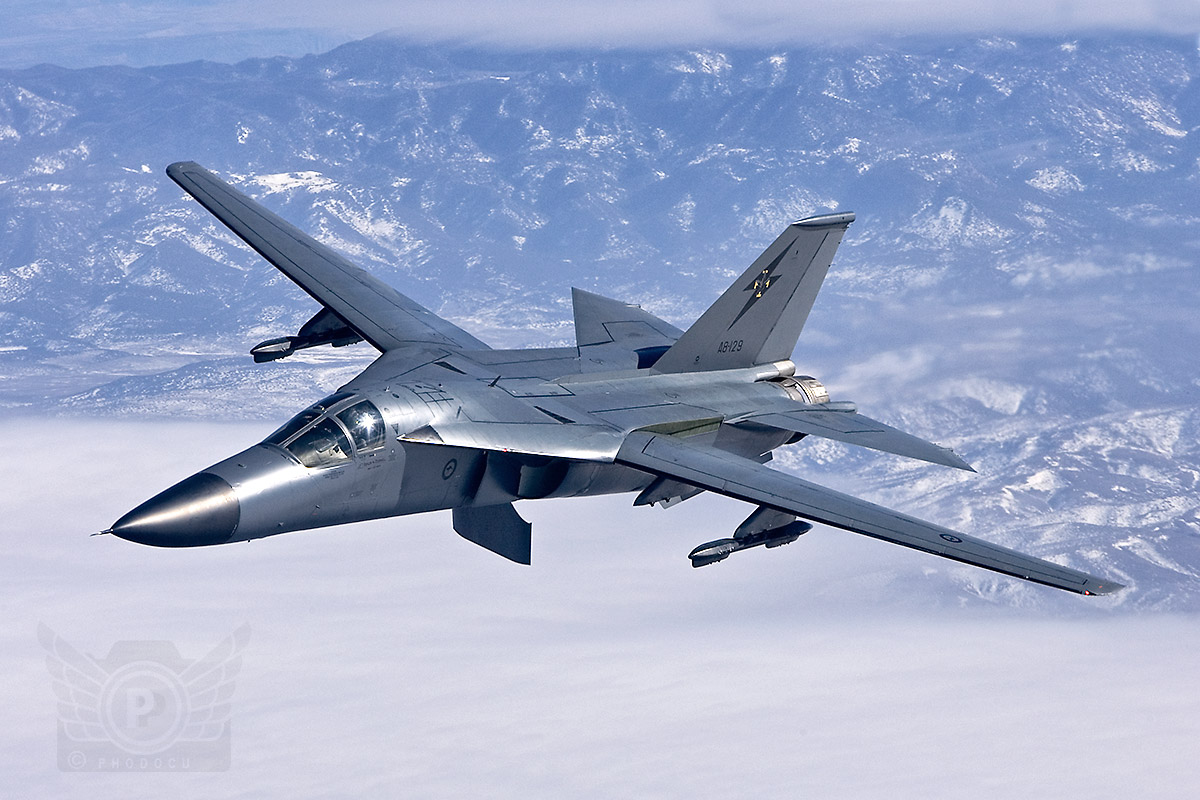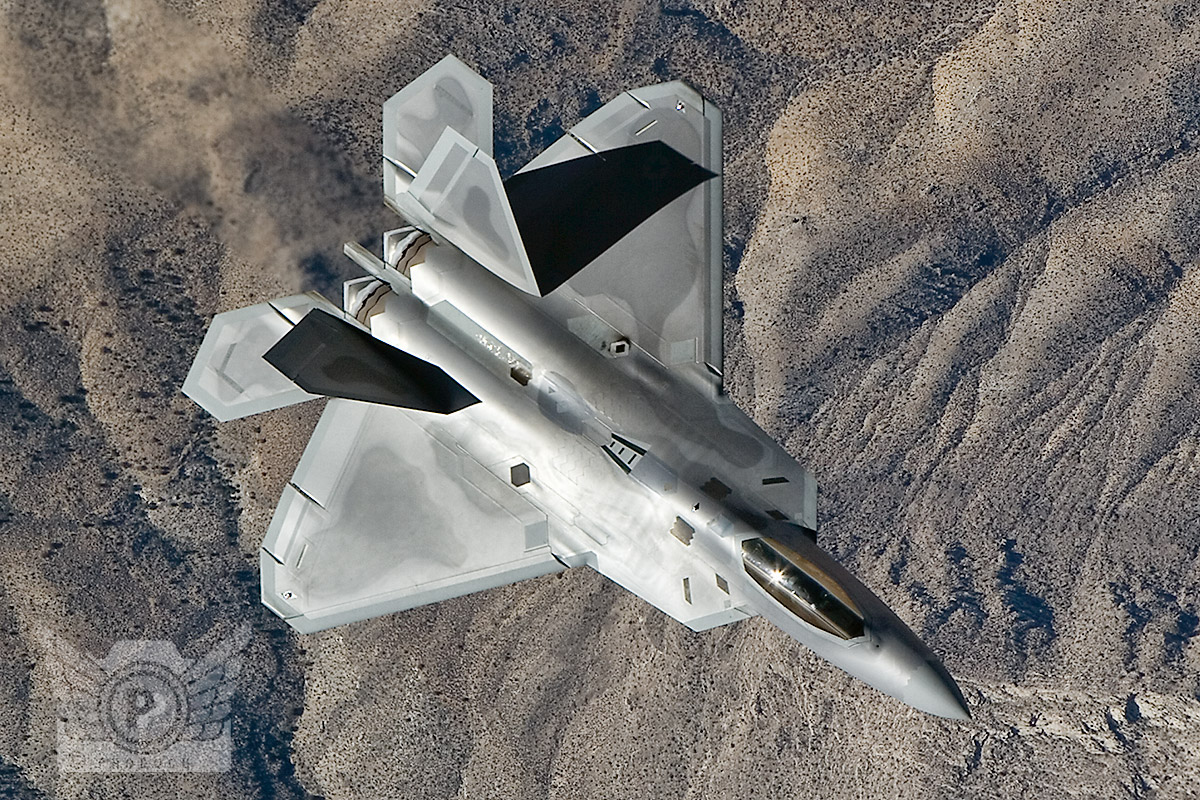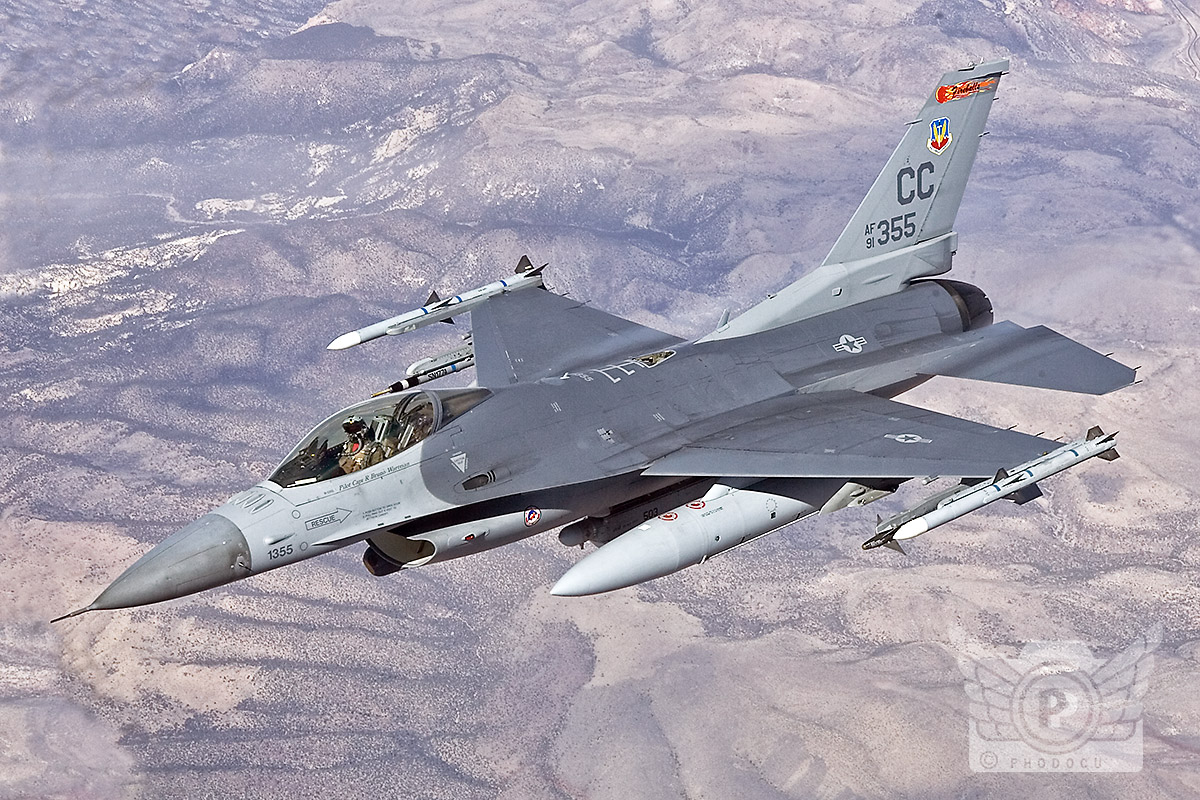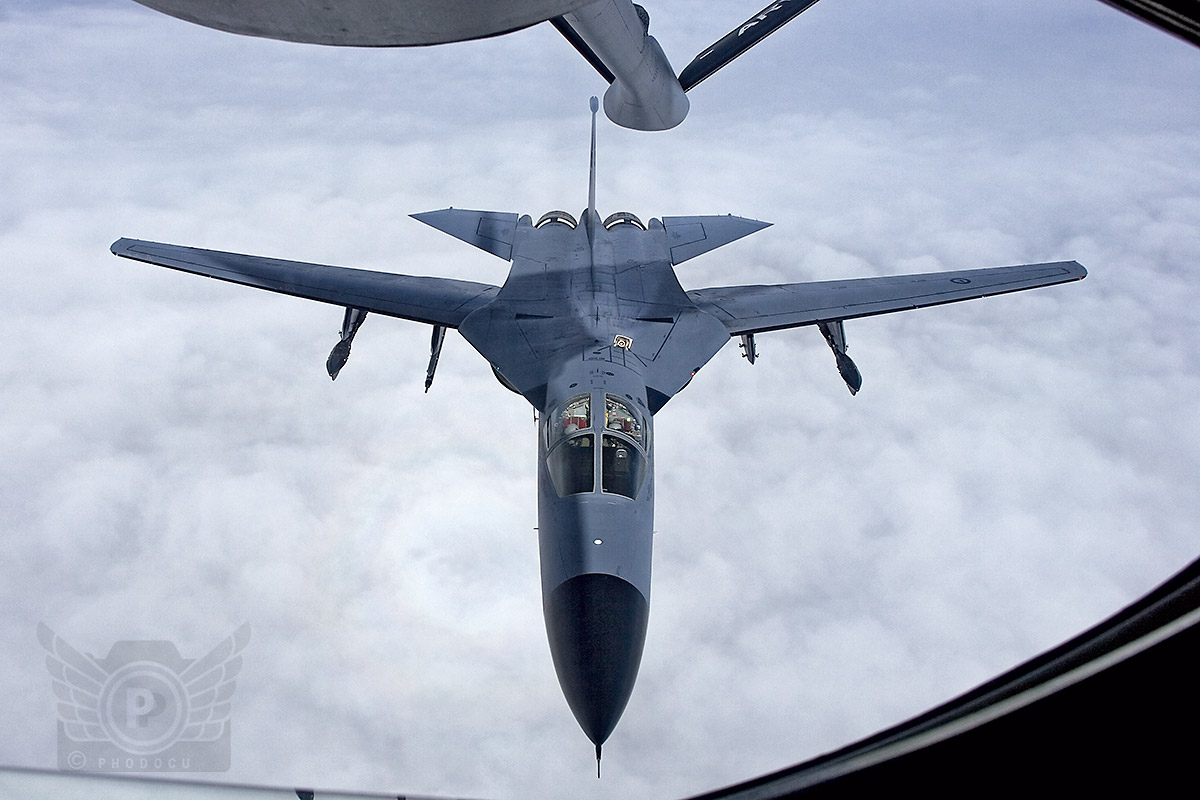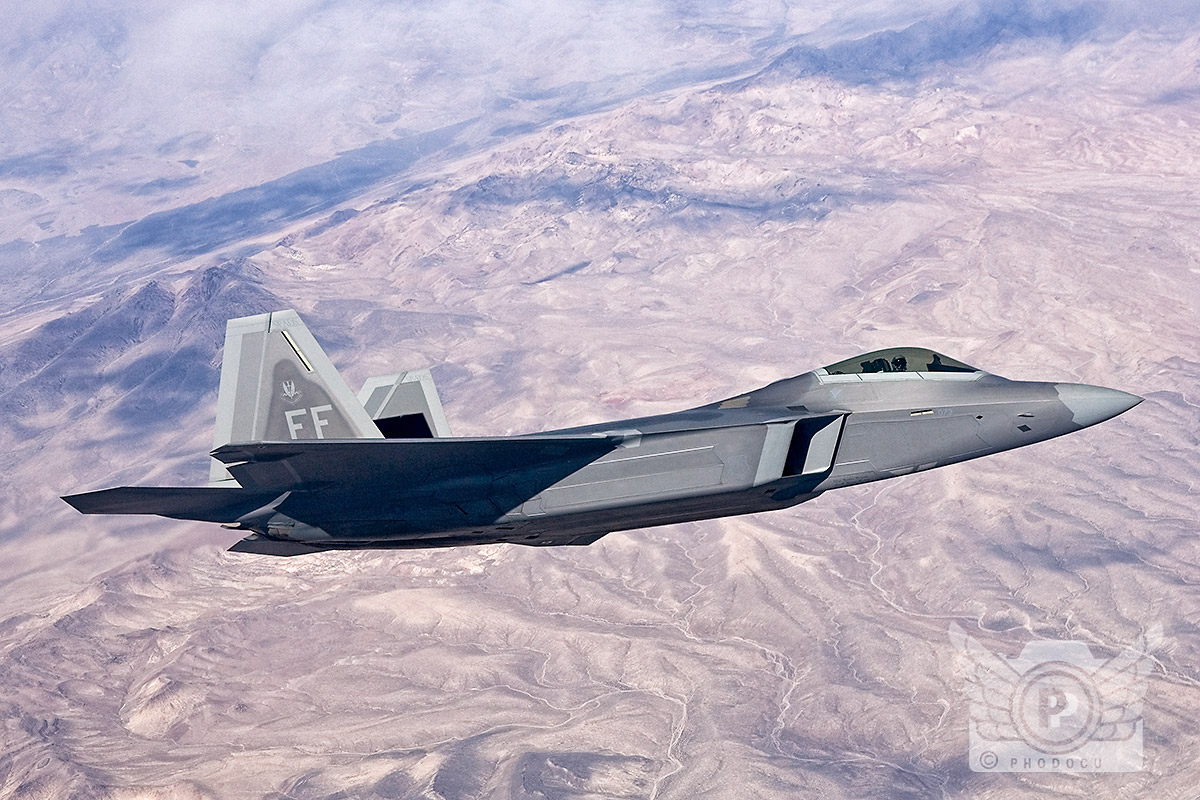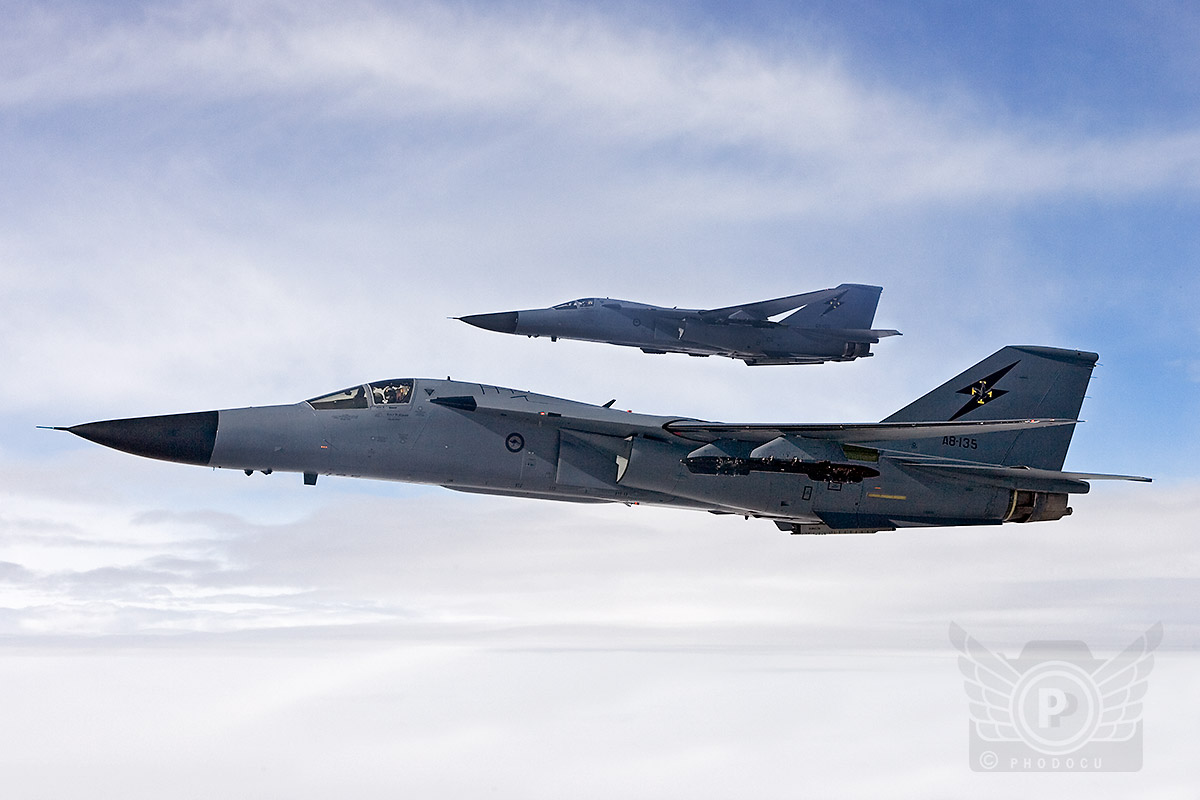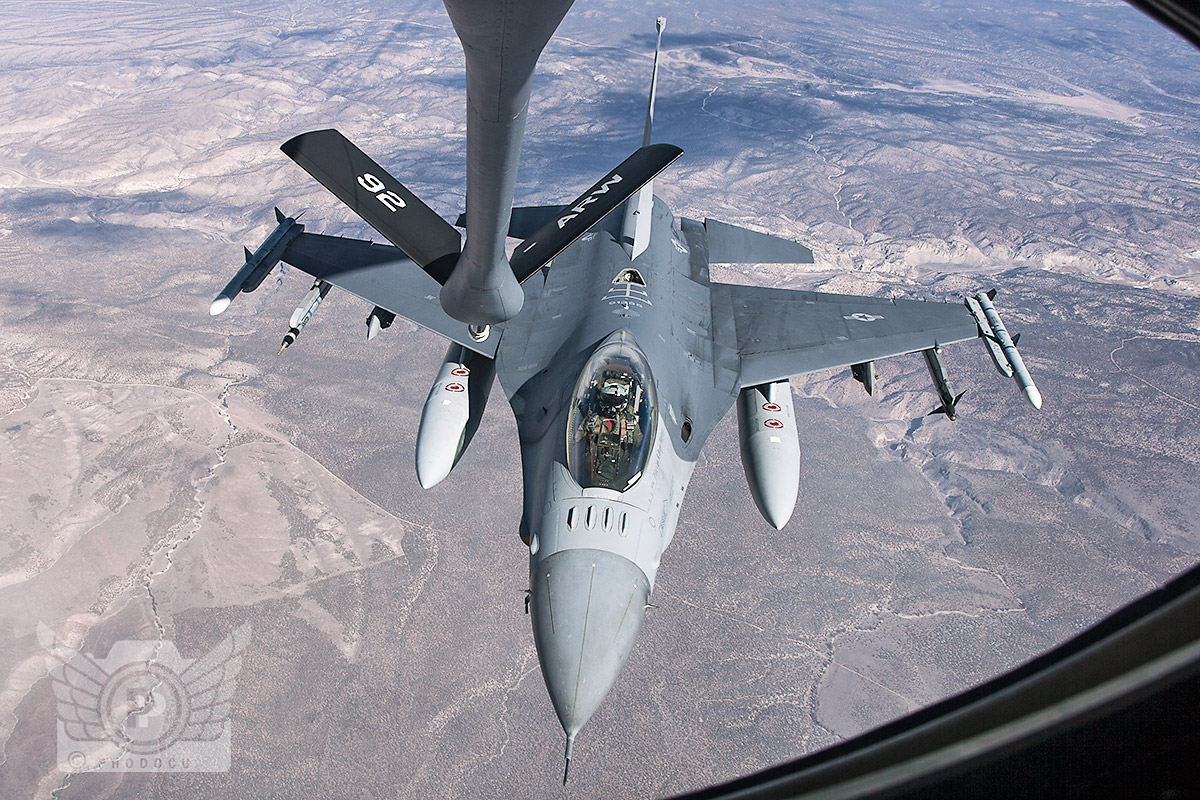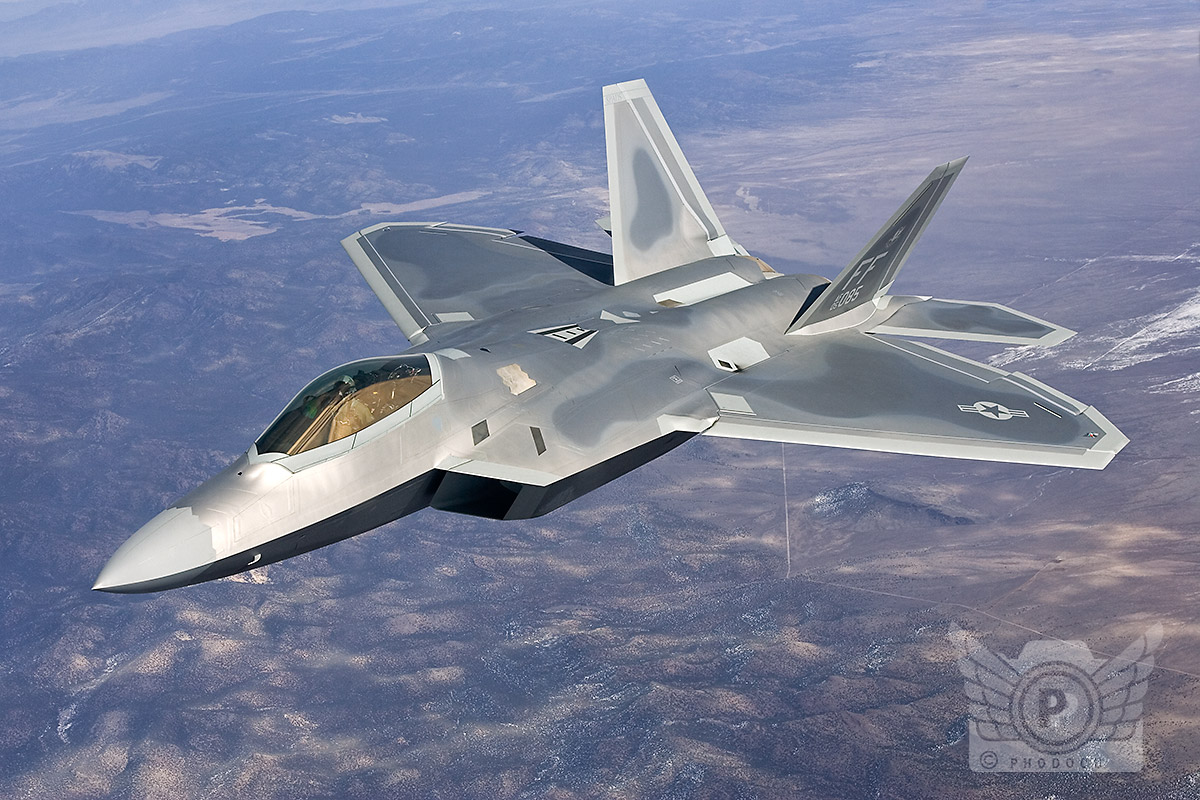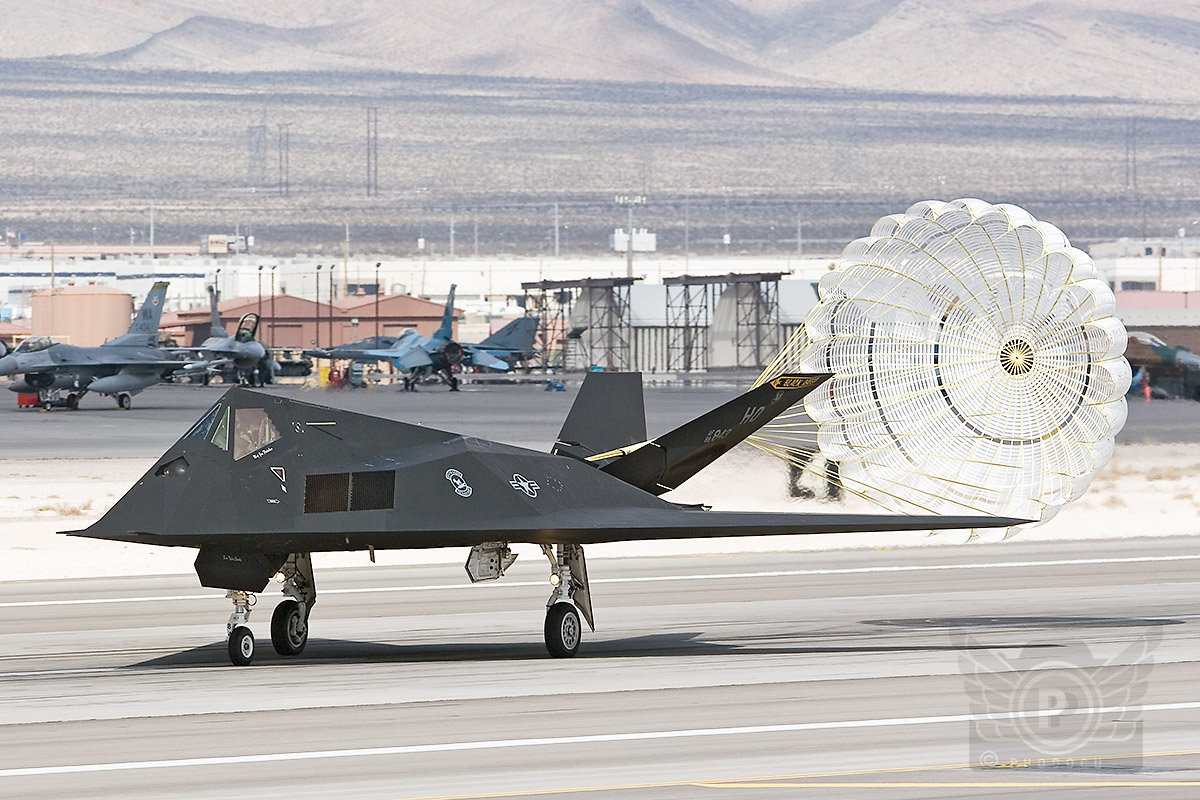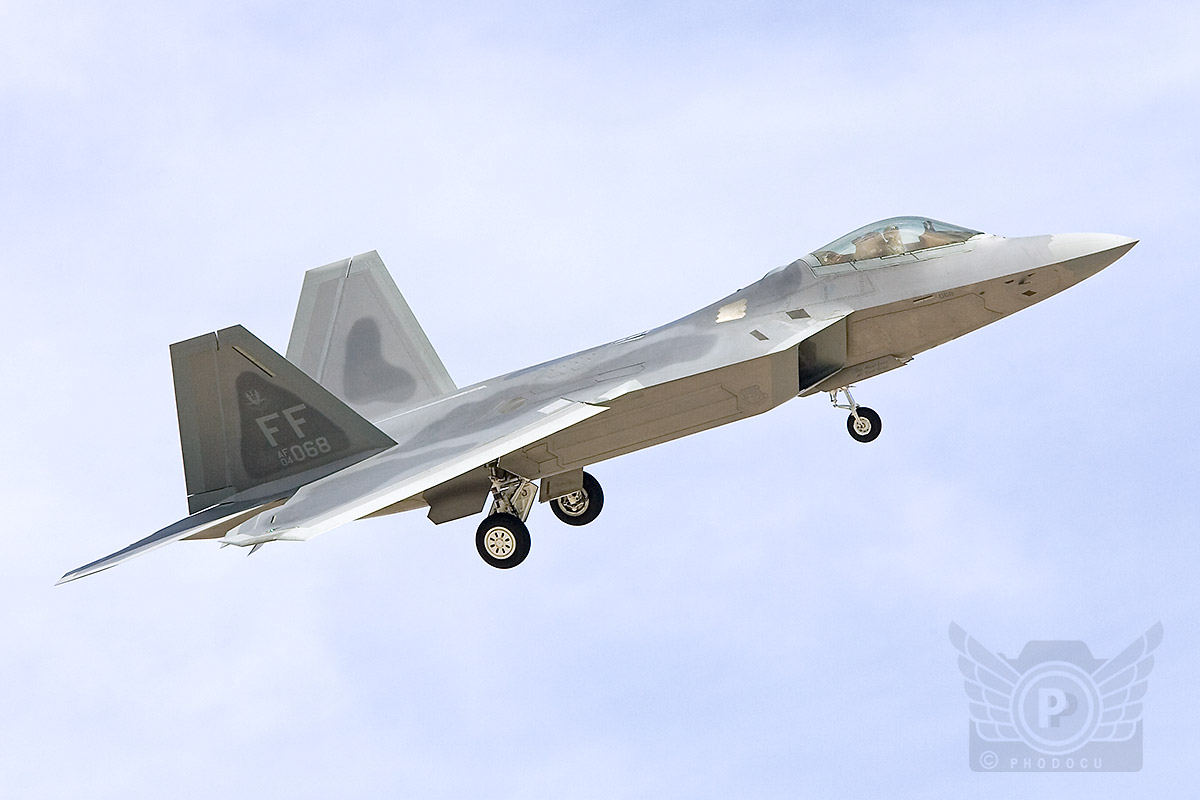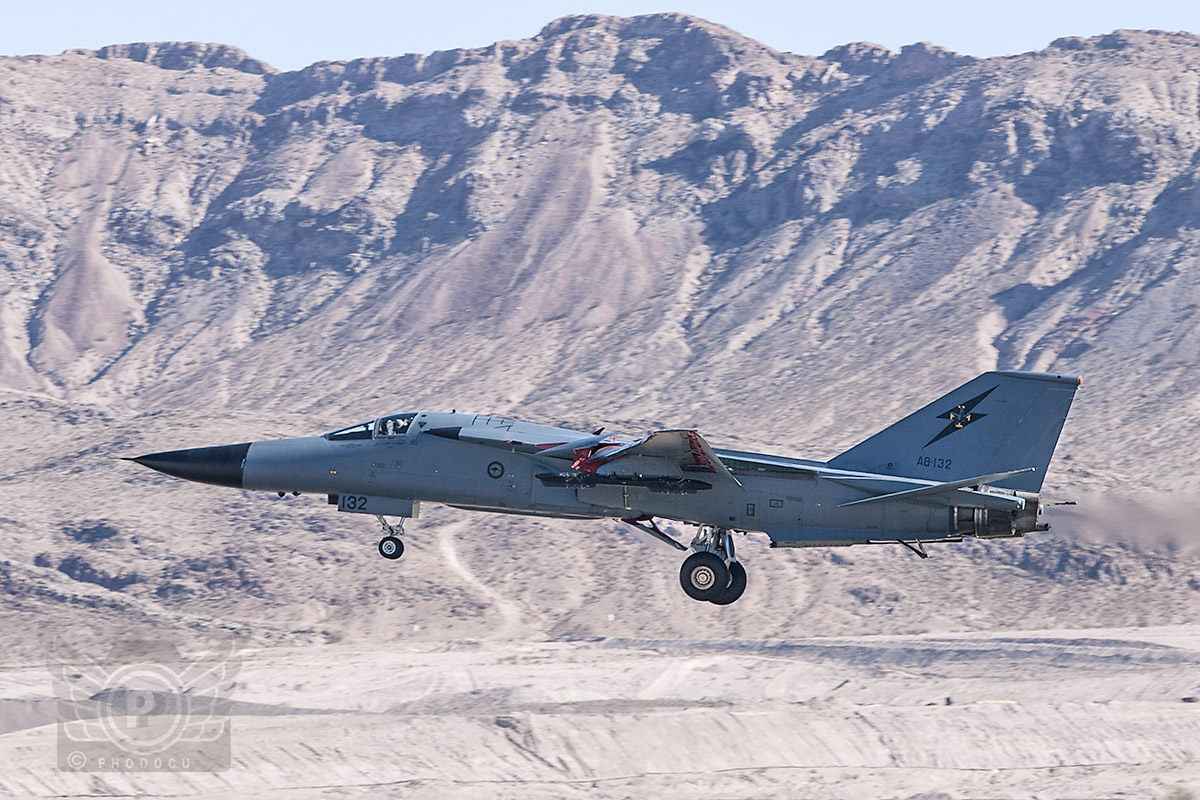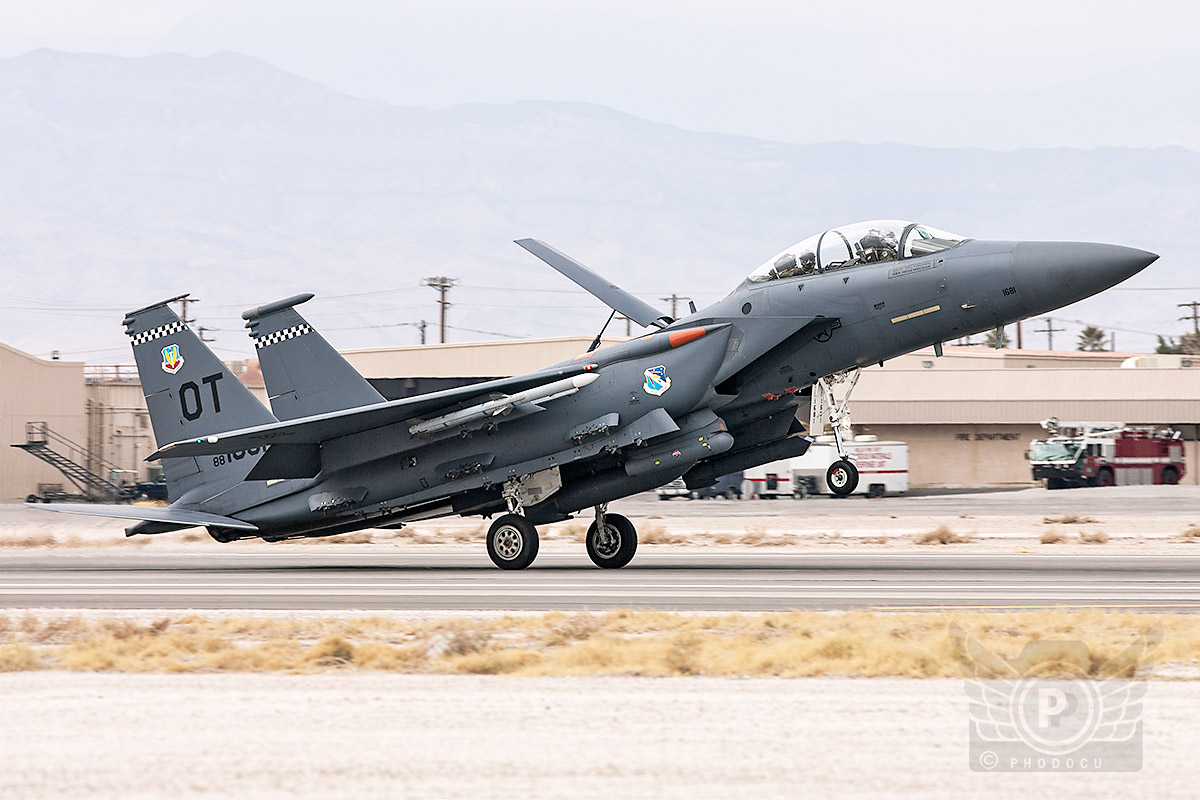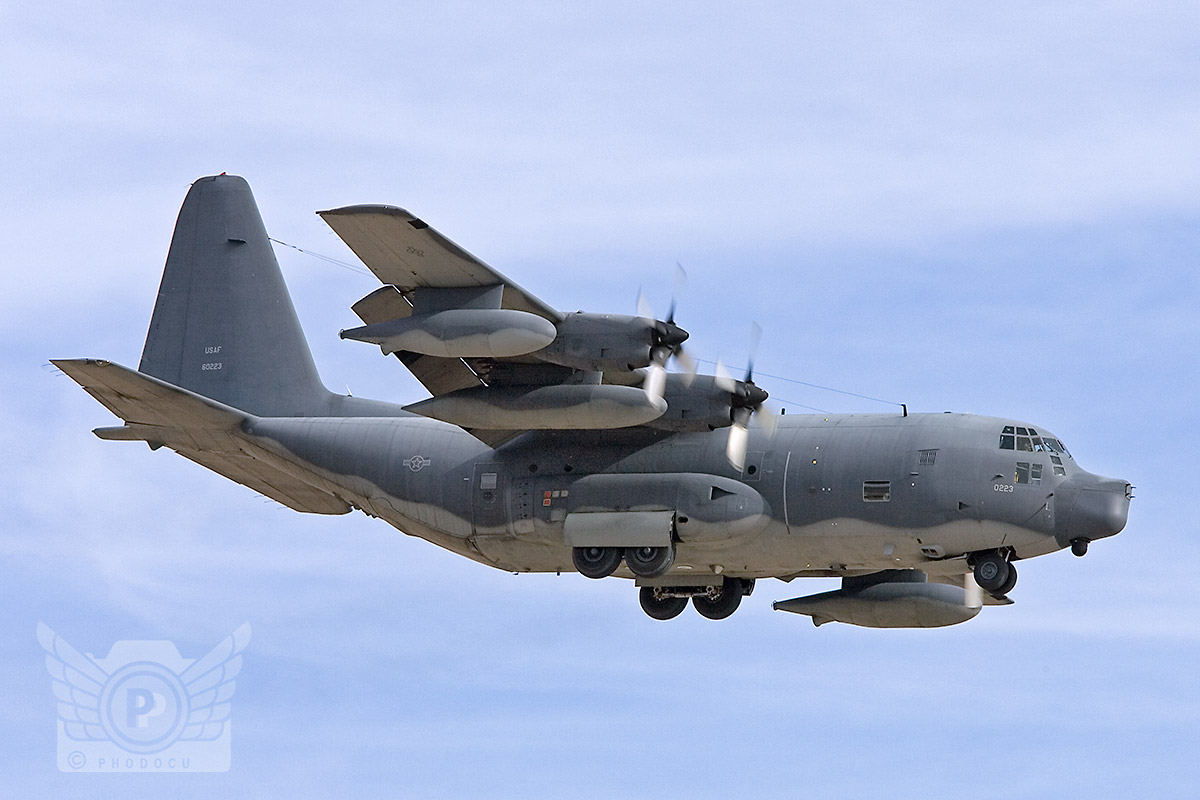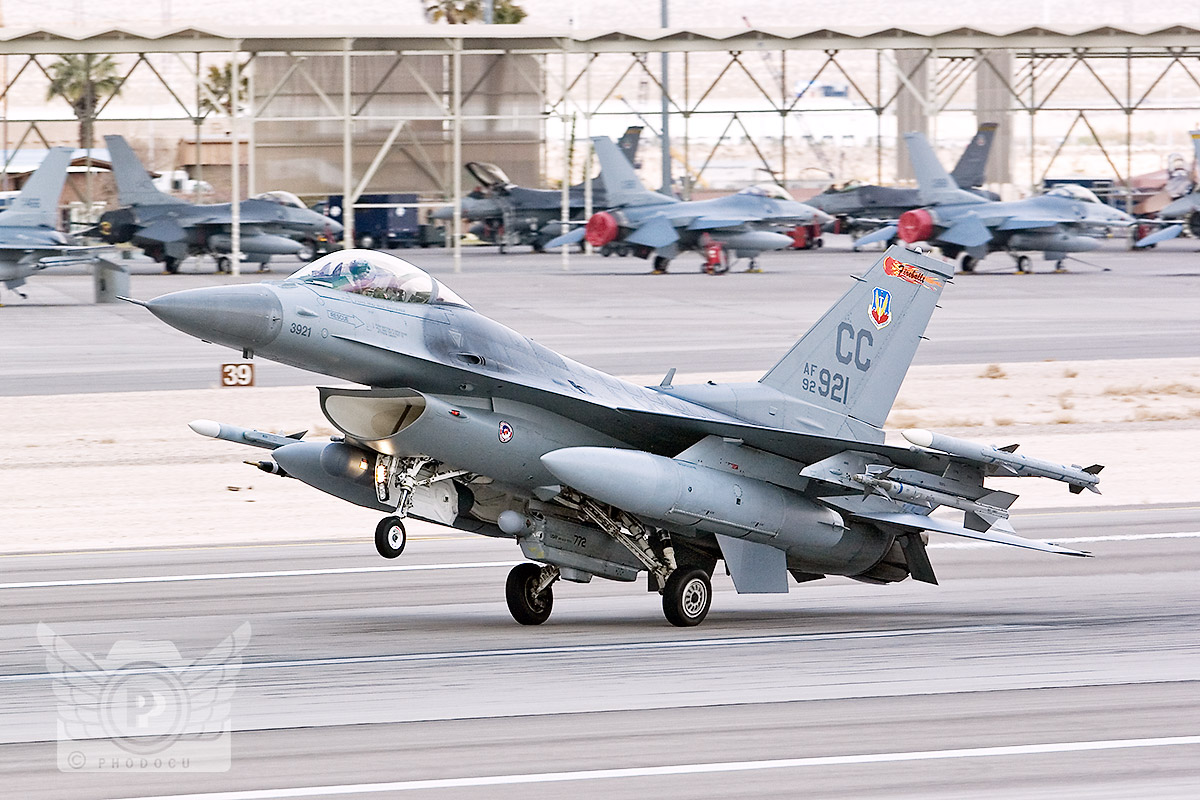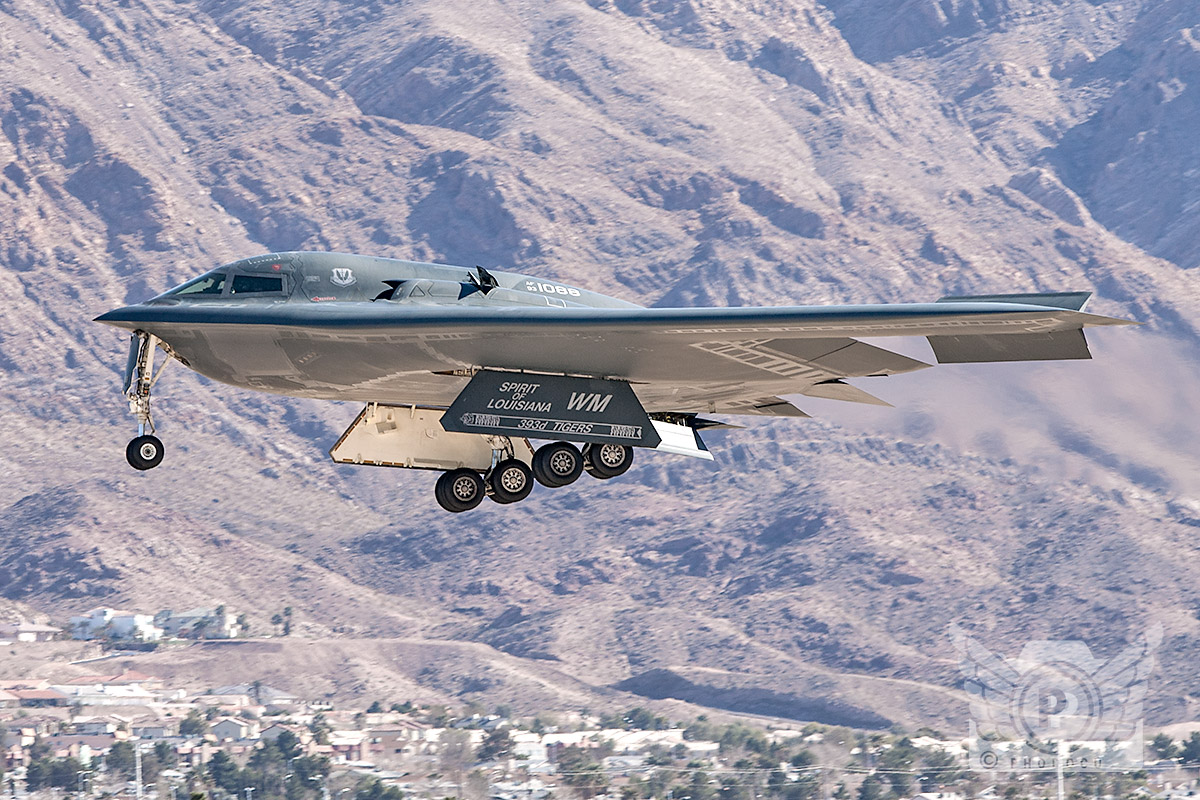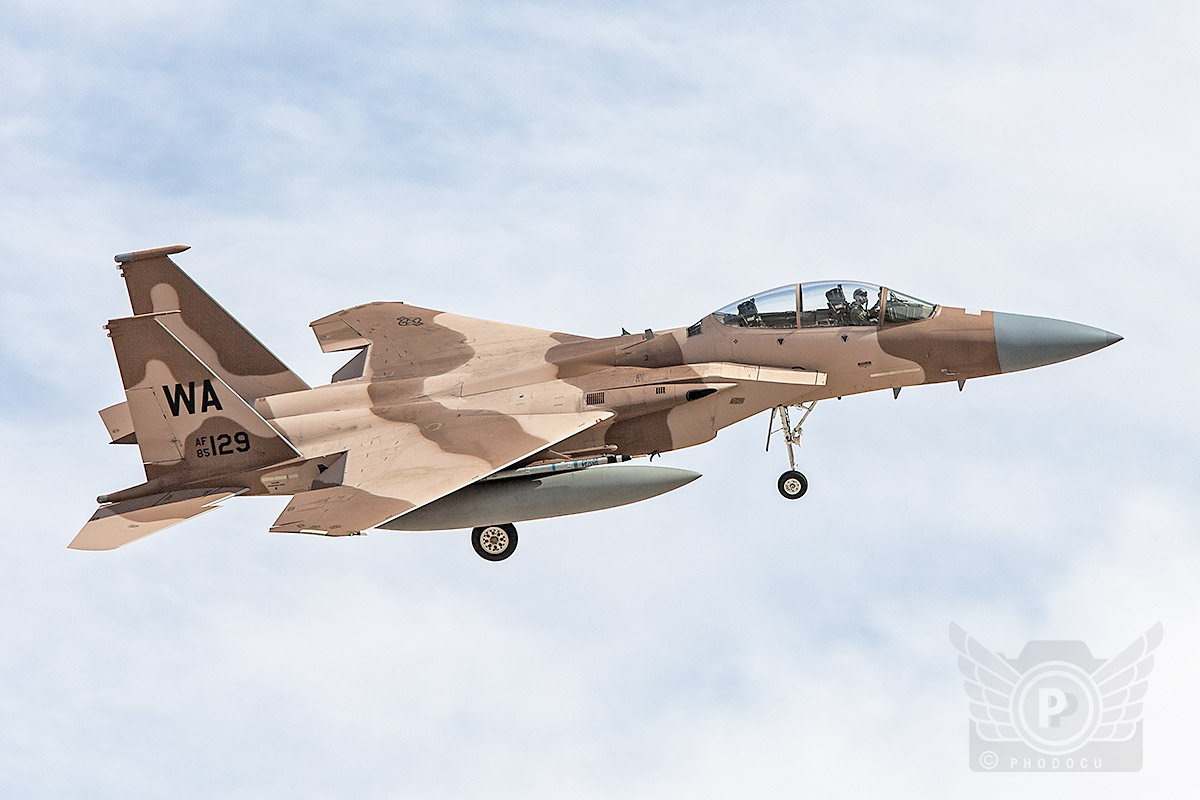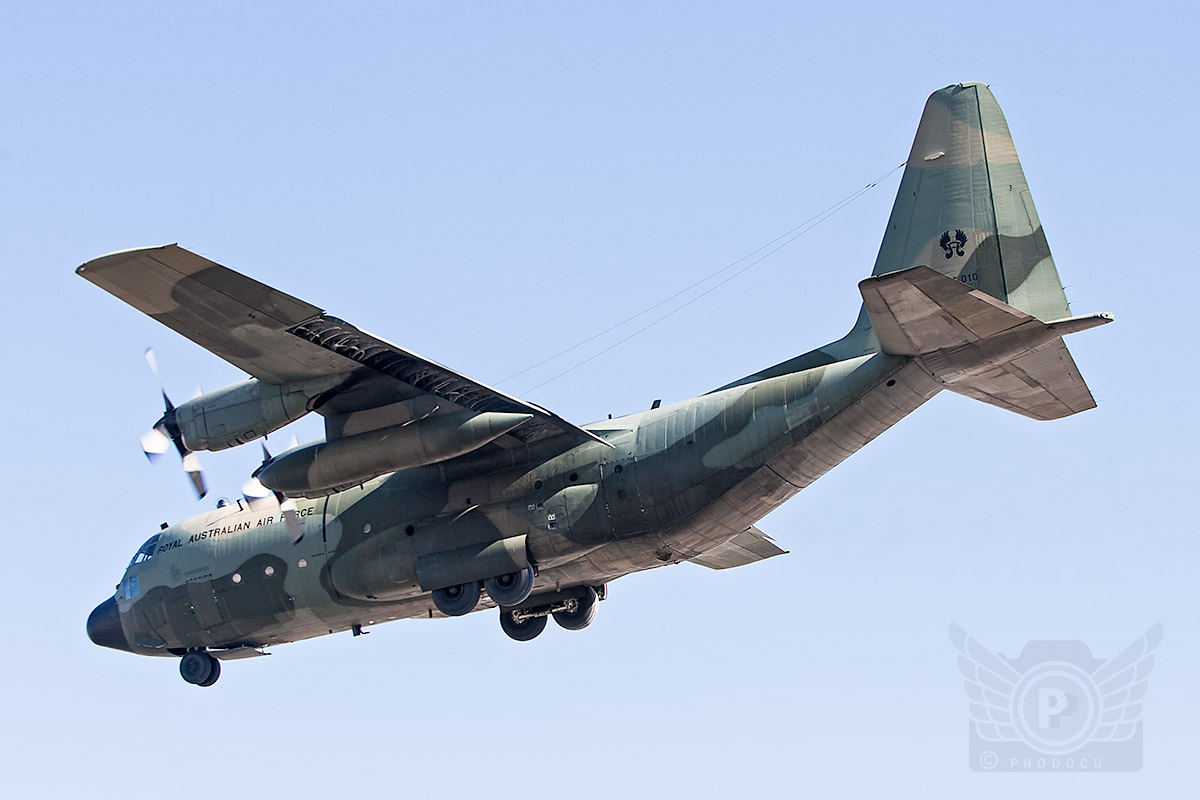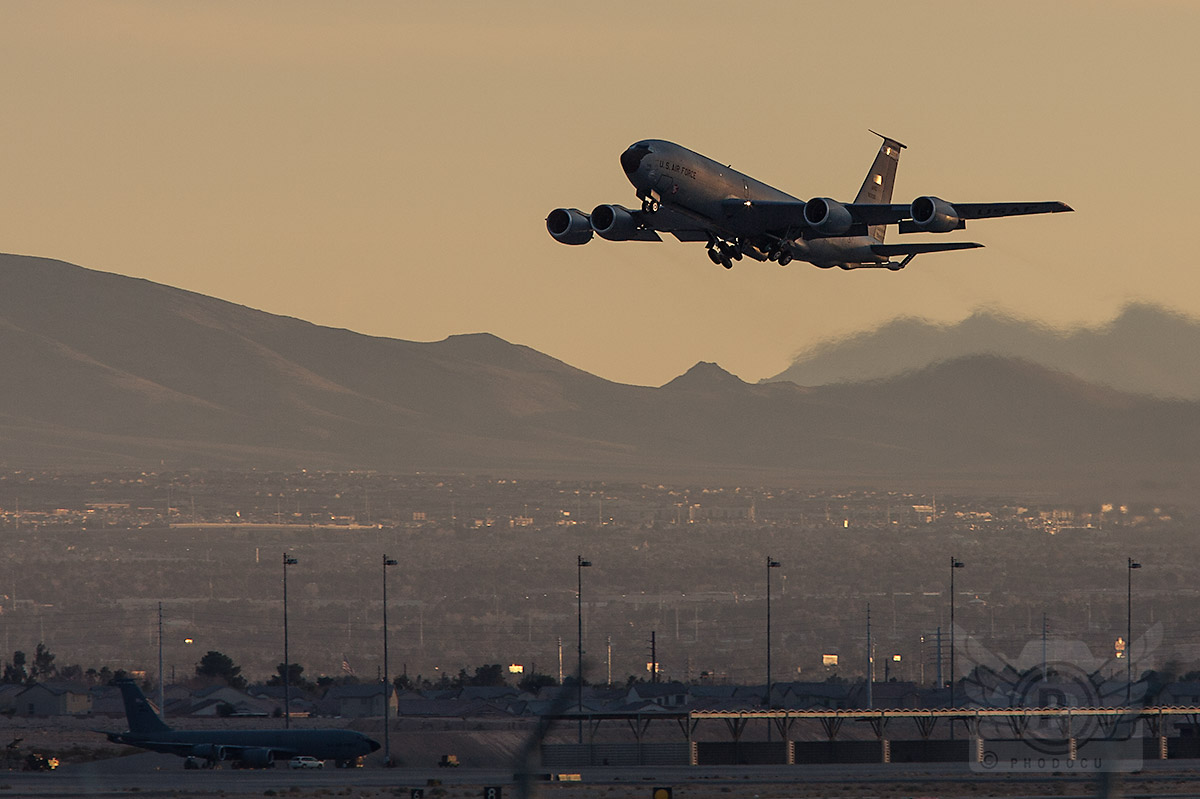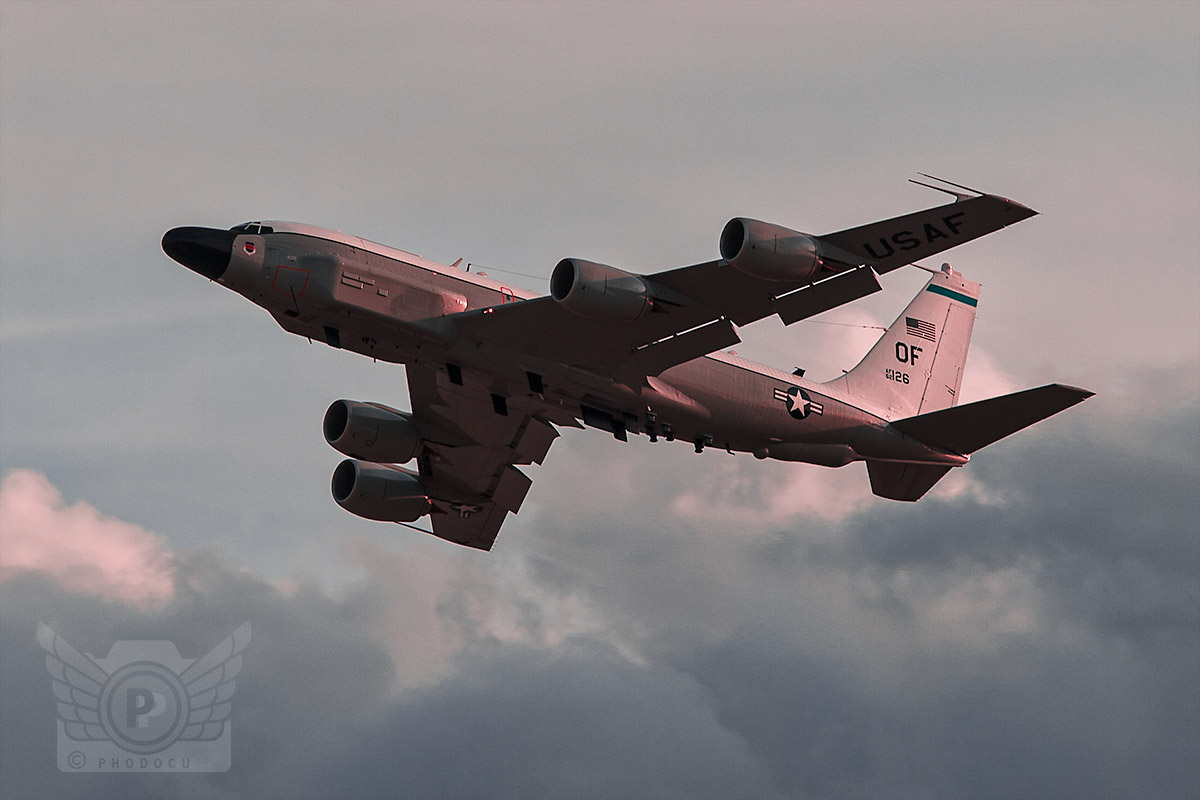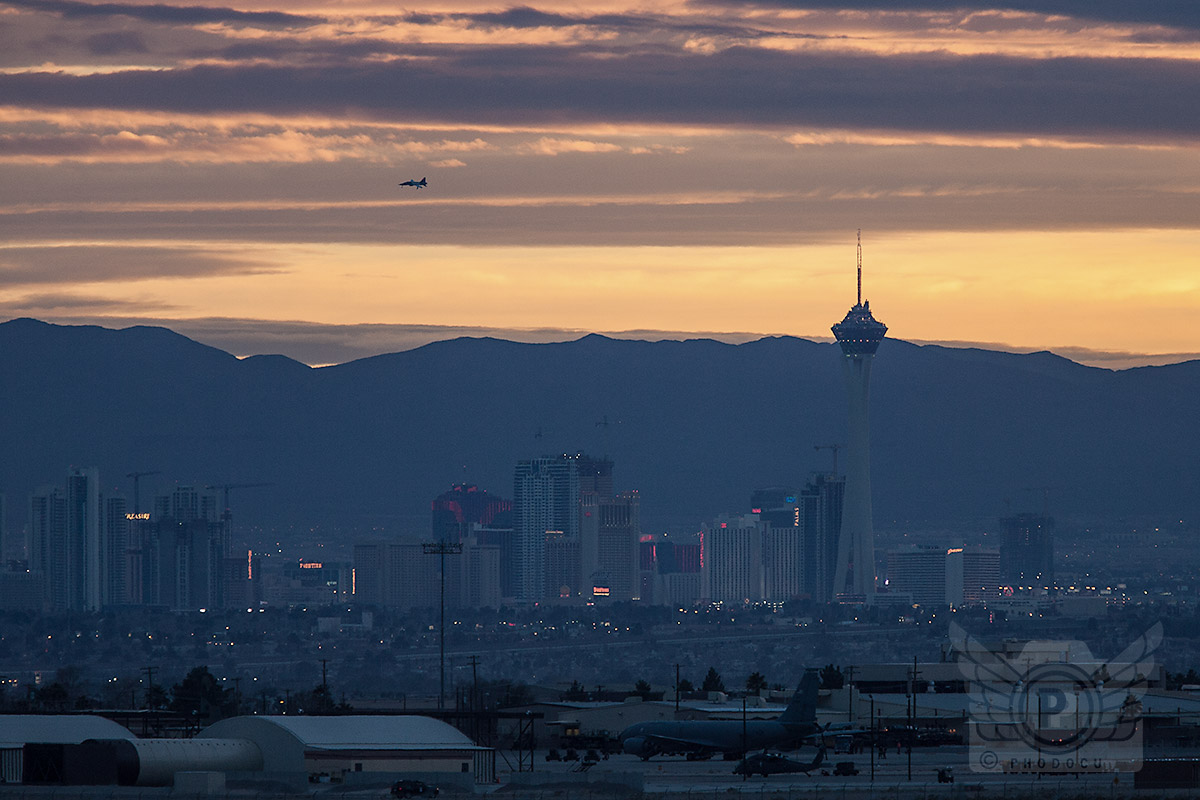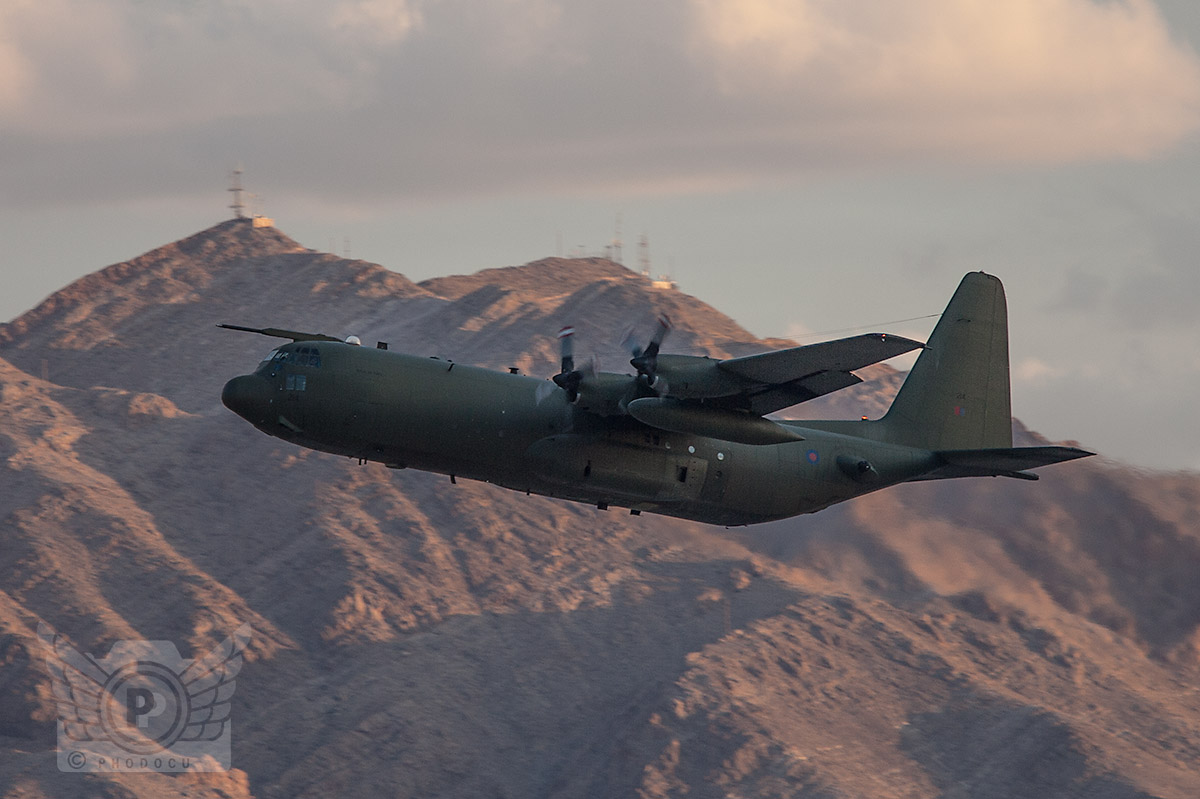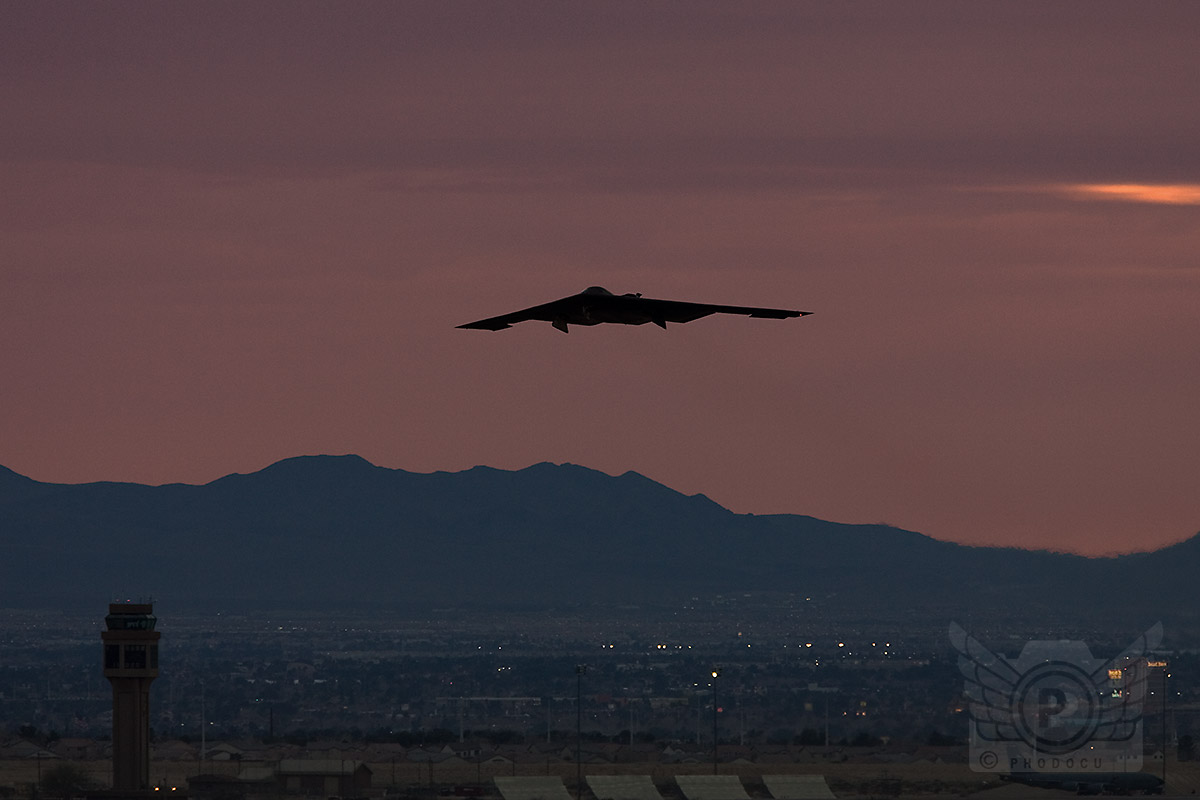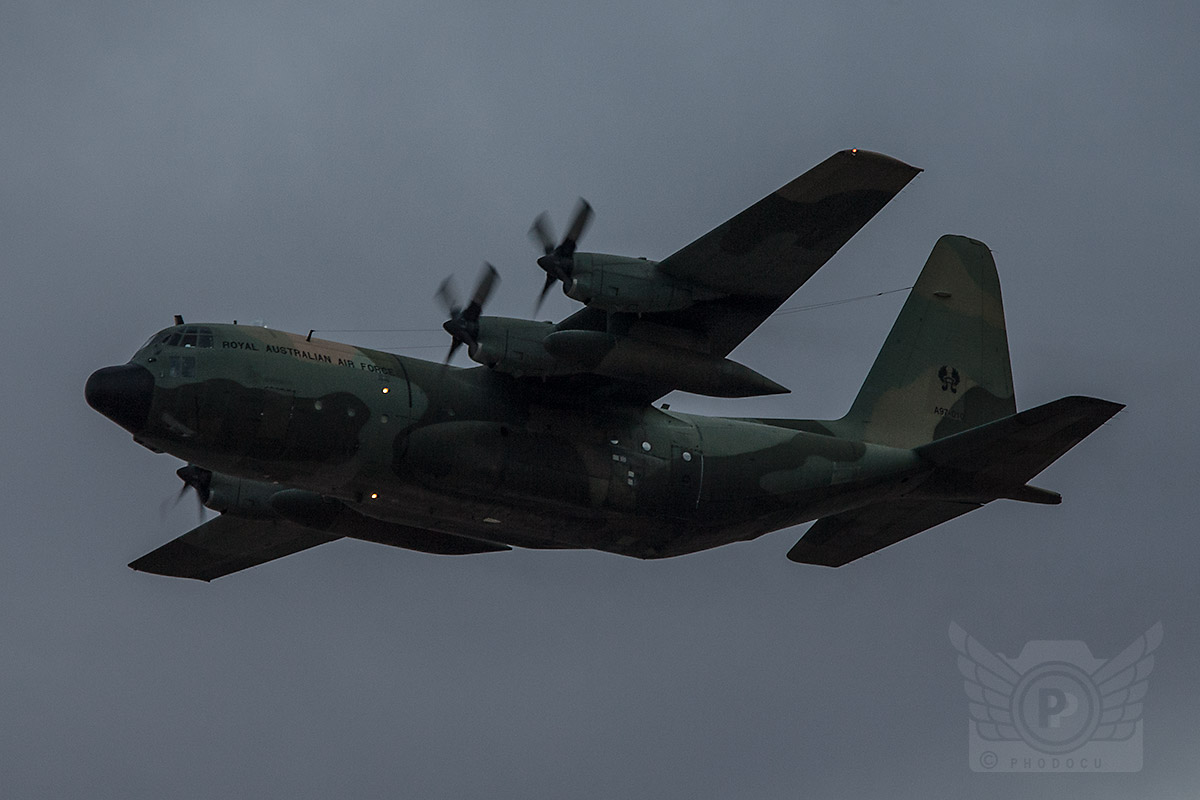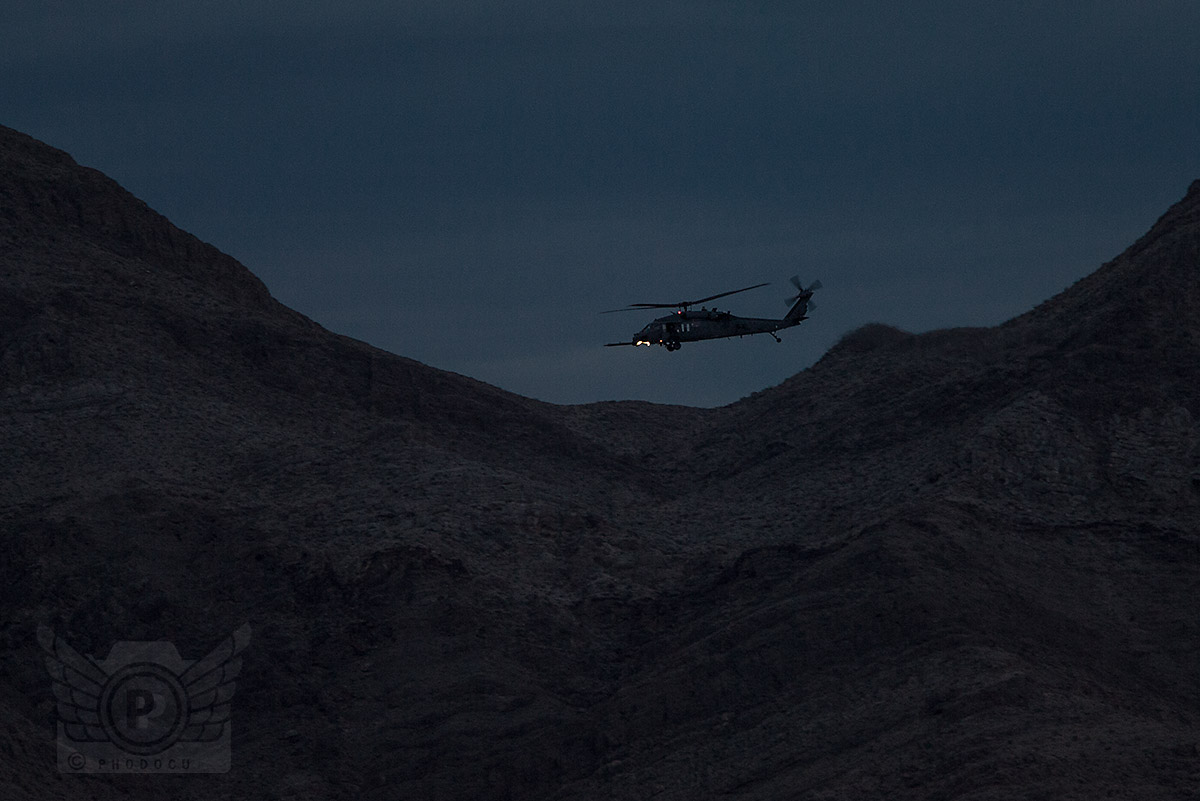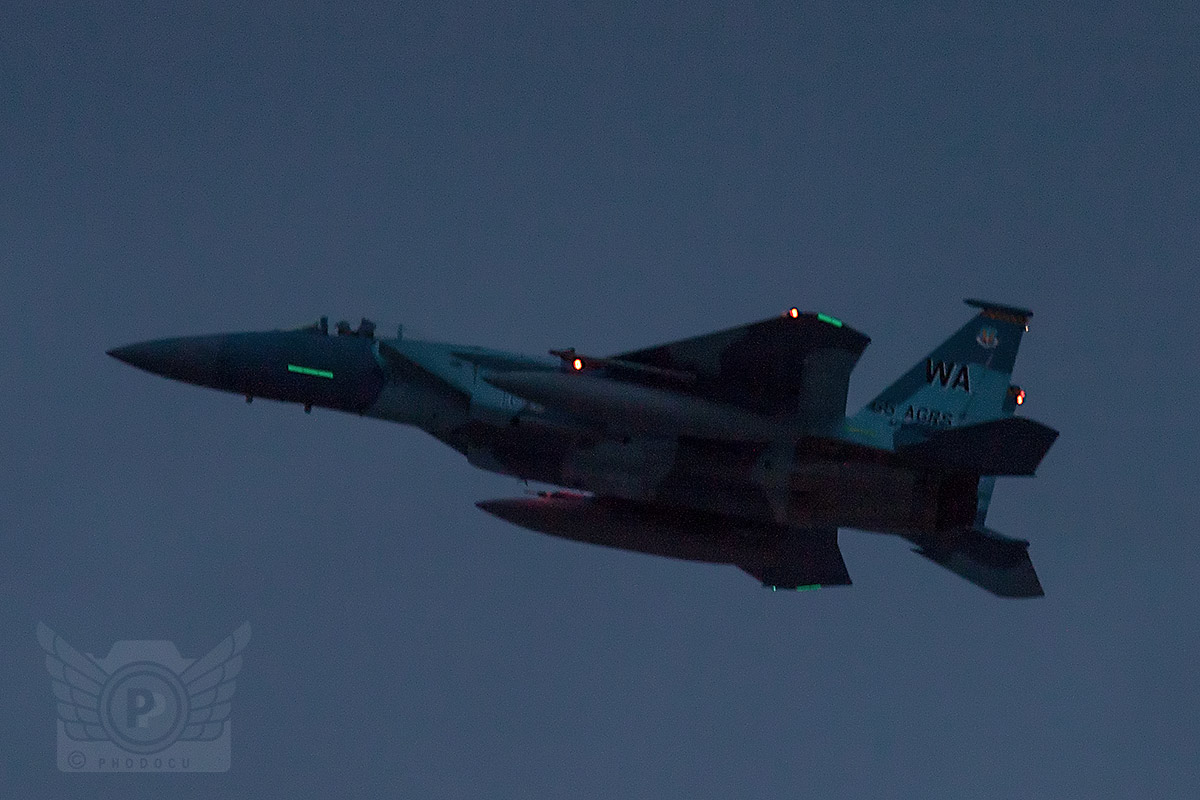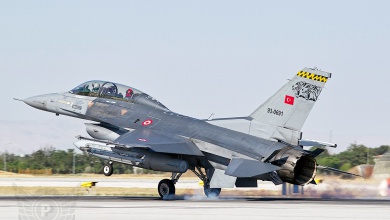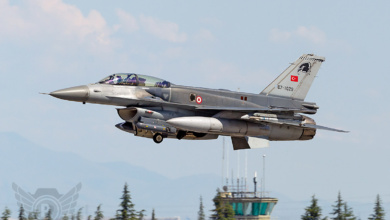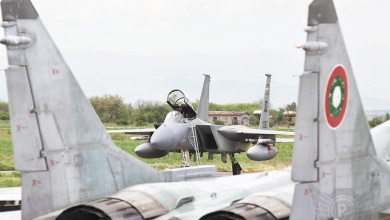Near Las Vegas, in the state of Nevada, 2007 really kicked off with the start of exercise Red Flag 07-2 on January 15. For the 32nd year in history, this air combat training event was held at Nellis Air Force Base (AFB) and again brought a wide variety of participants together. This is the only place in Vegas where they don’t settle for anything less than a Royal Flush!

Colonial Flag
In a five-week timeframe, the scenarios were spread over two periods of two weeks with an extra week in between. Every weekday two sorties were flown, of which one took place during daylight and the other at nightfall. All this adds up to nearly 1,000 sorties in just two weeks, with over 2,200 hours of logged flying time. The international list of participants included units from the United States, Australia and the United Kingdom and the subtitle for this event was “Colonial Flag”. This refers to the fact that parts of both the US and Australia once were in the hands of the British in the 17th and 18th Century.

In more than one way, it became a remarkable event. The first period was dominated by US units. Among the participants were both B-1 and B-2 bombers, US Navy EA-6B Prowlers, two E-3 Sentry AWACS, a RC-135 Rivet Joint, an E-8 JSTARS and lots of fighters. From the UK, two United States Air Forces Europe (USAFE) F-15E units, based at RAF Lakenheath and from the Pacific Air Forces (PACAF) theatre Japan-based F-15s from Kadena Airbase (AB) and F-16s from Misawa AB. Furthermore, MC-130s and HH-60s were there to provide Combat Search And Rescue (CSAR) and several KC-135 tanker send support aircraft to provide the necessary aerial refueling. The British had also sent a fair amount of aircraft to Nellis AFB, with Tornado F.3s and GR.4s plus a Special Forces Hercules.
This exercise is designed to fight the next big war, so these new additions will really prepare the participants for their Air Expeditionary Force deployments.Capt. Govin – 414th CTS

First and last timers
The second period of the exercise started at February 5th. Many new participants entered this course and one of the highlights was the first appearance of the F-22 Raptor as a Red Flag participant. While its sister squadron just made its way up to Japan for a deployment at Kadena AB, the 94th Fighter Squadron (FS) from Langley AFB, Virginia, brought 14 of its F-22s to Nellis AFB. With that, it also became the first Red Flag in which all three different stealth-model aircraft (B-2A, F-22A and F-117A) were integrated into the exercise. The B-2s from Whiteman AFB, Missouri already participated earlier in the two weeks of the first period and the F-117s had flown in from Holloman AFB, New Mexico just a few days before the second period started off. Various sources within the USAF indicated that it could very well be the last time ever that the F-117 Nighthawk will be attending a Red Flag exercise, since its retirement is scheduled for 2008 and the 49th Fighter Wing will transition to the F-22 Raptor.
The 522nd FS from Cannon AFB, New Mexico was also a last timer at this event. This F-16 unit faces disestablishment together with its remaining sister squadron due to Base Realignment And Closure (BRAC) list 2005 soon. Another participant that most likely made its last appearance at Nellis AFB is the Royal Australian Air Force (RAAF) F-111C Aardvark. Although no good alternatives have presented themselves, the current plan is to keep these aircraft in service until 2010. Besides six F-111 “Pigs”, also two RAAF C-130s came along for participation. Other foreigners in this second period were again the British, which remained present with Tornado GR.4 aircraft and a single Hercules. Finally, a rather uncommon participation came from the 85th Test and Evaluation Squadron (TES). This unit, which is normally based at Eglin AFB, Florida, brought along six F-16s, five F-15Cs and a single F-15E.
Unfair advantage
While the previously mentioned participants were mostly assigned to the Blue Forces, the 414th Combat Training Squadron (CTS) has control over the Red Forces. This unit is dedicated to plan, maintain and improve Red Flag exercises and has two aggressor squadrons assigned to provide a realistic threat in every scenario. Both the 64th Aggressor Squadron (AGRS), flying the F-16, and the 65th AGRS, flying the F-15, have highly skilled pilots who can simulate enemy threats. Their colorful painted aircraft have distinctive brown, blue or green scheme combinations and are all permanently based at Nellis AFB. Just recently, an Air Force proposal even suggested boosting the number of aircraft of each squadron up to 24 to ensure sufficient training capabilities for the future. The 414th CTS Flight Commander, Captain James Govin, explains that this year’s scenarios have been similar to those from previous Red Flag exercises, but now also include close air support training and dynamic targeting. “This exercise is designed to fight the next big war so these new additions will really prepare the participants for their Air Expeditionary Force (AEF) deployments” he said. The current Red Flag curriculum has become so much more intense, it can hardly be compared with those that were held in the ’90s and before.
One of the key factors in warfare has always been “knowing the enemy”. In this case, the RAAF actually did already know the enemy a little, since a RAAF exchange pilot is currently flying with the 65th AGRS at Nellis AFB. Flying with the Red Forces, Squadron Leader Steve Chappell nevertheless did not hesitate to put up a strong fight each time he engaged with the RAAF participants of the Blue Forces. Group Captain Mel Hupfeld, the Commanding Officer of No. 81 Wing at RAAF Williamstown and RAAF detachment commander for Red Flag 07-2, was given the opportunity to experience a flight with the aggressors. On Thursday February 8 he went up in the air with SQNLDR Steve Chappell in an F-15D and flew over the “Nevada Outback” with the Red Forces to see the exercise from a whole different perspective.

From the start, this time the Blue Forces had a so-called unfair advantage on their side; the F-22 Raptor. Just because the advanced capabilities of this aircraft exceeds all others, it was very hard but yet a challenge for the aggressor F-15s and F-16s to maintain the Red Forces threat stand strong against these superior fighters. “I can’t see the damn thing,” said SQNLDR Stephen Chappell, “It won’t let me put a weapons system on it, even when I can see it visually through the canopy and that annoys the hell out of me.” But according to 94th FS Commander, Lt. Col. Dirk Smith, this has been the best simulated lethal enemy threat a unit could wish for and definitely not just a walk in the park! “The training provided by the Red Flag adversaries is like no other on earth.” said Colonel Smith. “Our pilots are experiencing a tremendous learning curve.” And yet another milestone in the boosted career of the Raptor occurred, because this was actually the first time ever for F-22s to interact with coalition forces.


Sharing the knowledge
For logistic reasons, the Red Flag organization created a week in between the two periods to allow participants to move in and out of Nellis AFB more easily than before. At the same time, units that stayed for the second period were able to get some additional time over the Nellis ranges for training and for maintenance purposes. This new planning seems to have been a success and will probably find a continuance in the planning of future exercises.
Without any doubt, Red Flag still is one of the worlds leading exercises. It has the ability to create a complete wartime scenario over a 3 million acre range area in which the Blue Forces have to fight against the Red Forces. After a mission, all participants can actually review their own actions and analyze if those contributed to and had effect on the goals that the Blue Forces had to achieve. But the exercise also unites air forces from all over the world to share their knowledge and skills.
There is something to learn for everyone
We are part of the US Air Force, but interact mostly with NATO forces since we are based in Europe. Our participation in Red Flag allows us to keep connected with other American units, learn from them and share some of our own experience with them in return.
492nd Fighter Squadron
Pilots from the 492nd FS, normally based at RAF Lakenheath, United Kingdom, explain: “We are part of the US Air Force, but interact mostly with NATO forces since we are based in Europe”. “The same goes for our colleagues from Kadena and Misawa, as they frequently train with the Japanese Air Self Defense Force (JASDF).”. “Our participation in Red Flag allows us to keep connected with other American units, learn from them and share some of our own experience with them in return.”. For the 492nd “Madhatters” this exercise will also be a valuable step towards their next AEF deployment cycle that is coming up in the near future. “Here we actually meet the units that we will be deploying with later on and already learn to understand each others capabilities, limitations and work preferences.”. “On deployment you are dealing with a potential threat situation on a daily basis and already from the start you now avoid most of the adaptation problems an AEF can experience.”. “That will keep you more focused on the actual mission, rather than having to solve issues among each other.”. As for the Mathatters, they are on a real warpath. After completing the first period of Red Flag 07-2, they flew directly to Barksdale AFB, Louisiana to participate in exercise Green Flag East.
So on all grounds, this event had a special value to its participants and again proved to be an essential training program for both US and coalition forces around the globe. Interaction and learning is the key to a successful operation and Red Flag will continue to provide the knowledge and support.
Participants
| force | role | unit | type of aircraft | homebase |
|---|---|---|---|---|
| Red Forces | Aggressor | 64th AGRS | F-16C | Nellis AFB, NV |
| 65th AGRS | F-15C/D | Nellis AFB, NV | ||
| Blue Forces | Offensive air | 44th FS | F-15C/D | Kadena AB, Japan |
| RAF sqn mix | Tornado F.3 | United Kingdom | ||
| Interdiction | 9th BS | B-1B | Dyess AFB, TX | |
| 13th BS | B-2A | Whiteman AFB, MO | ||
| 48th FW | F-15E | RAF Lakenheath, UK | ||
| RAF sqn mix | Tornado GR.4 | United Kingdom | ||
| SEAD | 35th FW | F-16C/D | Misawa AB, Japan | |
| VAQ-131/-132 | EA-6B | Whidbey Island, WA | ||
| Command & | 552nd ACW | E-3B/C | Tinker AFB, OK | |
| Control | 38th RS | RC-135V | Offutt AFB, NE | |
| 16th ACCS | E-8C | Robins AFB, GA | ||
| 9th RW* | U-2S | Beale AFB, CA | ||
| 57th Wing* | MQ-1A | Creech AFB, NV | ||
| CSAR | 41st RQS | HH-60G | Moody AFB, GA | |
| 71st RQS | HC-130P | Moody AFB, GA | ||
| A/1-211 Avn | AH-64A | West Jordan, UT | ||
| Airlift | LTW | Hercules | RAF Lyneham, UK | |
| Support | Tanker | 63rd ARS | KC-135R | Selfridge ANGB, MI |
| 108th ARS | KC-135E | Scott AFB, IL |
| force | role | unit | type of aircraft | homebase |
|---|---|---|---|---|
| Red Forces | Aggressor | 64th AGRS | F-16C | Nellis AFB, NV |
| 65th AGRS | F-15C/D | Nellis AFB, NV | ||
| Blue Forces | Offensive air | 94th FS | F-22A | Langley AFB, VA |
| 85th TES | F-15C | Eglin AFB, FL | ||
| Interdiction | 13th BS | B-2A | Whiteman AFB, MO | |
| 49th FW | F-117A | Holloman AFB, NM | ||
| 6 Sqn | F-111C | RAAF Amberley, Australia | ||
| RAF sqn mix | Tornado GR.4 | United Kingdom | ||
| 85th TES | F-16C/D + F-15E | Eglin AFB, FL | ||
| SEAD | 522nd FS | F-16C/D | Cannon AFB, NM | |
| VAQ-133 | EA-6B | Whidbey Island, WA | ||
| Command & | 552nd ACW | E-3B/C | Tinker AFB, OK | |
| Control | 38th RS | RC-135V | Offutt AFB, NE | |
| 16th ACCS | E-8C | Robins AFB, GA | ||
| 9th RW* | U-2S | Beale AFB, CA | ||
| 57th Wing* | MQ-1A | Creech AFB, NV | ||
| CSAR | 129th RQS | HH-60G | Moffett Federal AP, CA | |
| 130th RQS | HC-130P | Moffett Federal AP, CA | ||
| 37 Sqn | C-130H | RAAF Richmond, Australia | ||
| Airlift | LTW | Hercules | RAF Lyneham, UK | |
| Support | Tanker | 319th ARW | KC-135R/T | Grand Forks AFB, ND |
| 126th ARS | KC-135R | Milwaukee IAP, WI |
Additional photos




















Acknowledgement
Phodocu would like to thank the Nellis AFB Public Affairs Office and particularly Capt. Justin McVay and Mr. Mike Estrada for their support. Furthermore Phodocu expresses its gratitude to 319th Aerial Refueling Wing Public Affairs Officer Lt. Randi Norton for her time and effort in this matter.

